Traditional living rooms represent the epitome of timeless elegance, combining rich historical influences with refined comfort. These spaces honor classic design principles while creating inviting environments for family gatherings and formal entertaining. From Georgian symmetry to Victorian opulence, traditional living rooms embrace quality craftsmanship, luxurious fabrics, and sophisticated color palettes. Whether drawing inspiration from English manor houses, American colonial homes, or French provincial estates, these design approaches emphasize permanence and gracious living. Each traditional living room idea showcases distinct characteristics that have endured through centuries, proving that classic design transcends fleeting trends.
1. Traditional Georgian Colonial Living Room with Formal Symmetry
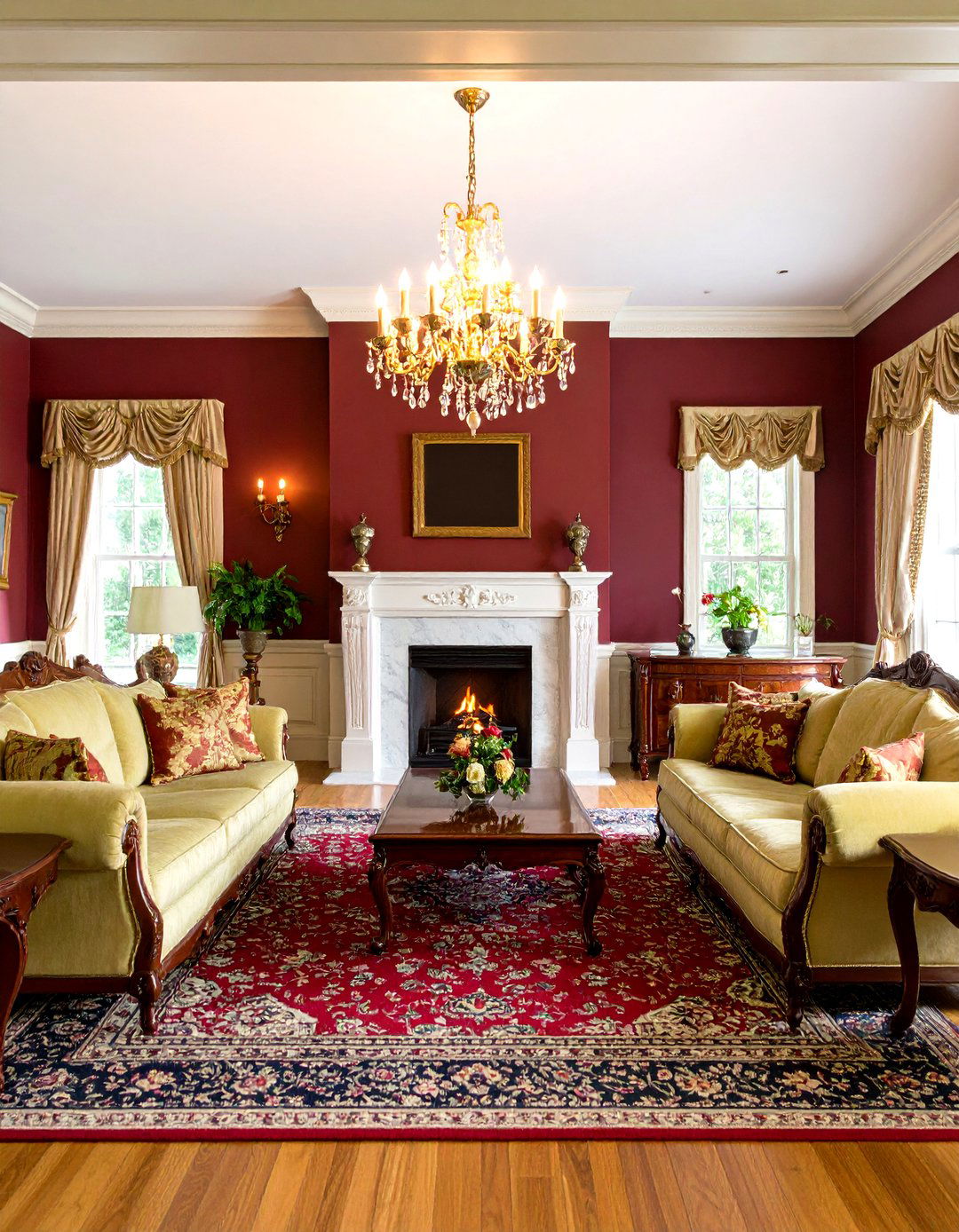
A Georgian colonial living room centers around perfect symmetrical balance, featuring matching sofas flanking a marble fireplace with identical table lamps and artwork creating harmonious proportions. Rich mahogany furniture includes Queen Anne-style wingback chairs with cabriole legs and a Chippendale coffee table displaying intricate carved details. The color palette consists of deep burgundy walls complemented by cream moldings and gold accents throughout the space. Heavy silk drapery in coordinating patterns frames tall windows, while Persian rugs anchor the formal seating arrangement. Crystal chandeliers provide elegant illumination, and oil paintings in ornate gold frames adorn the walls. This design emphasizes the Georgian principles of order, refinement, and classical proportions that defined colonial American aristocracy.
2. Traditional English Country Living Room with Cottage Charm
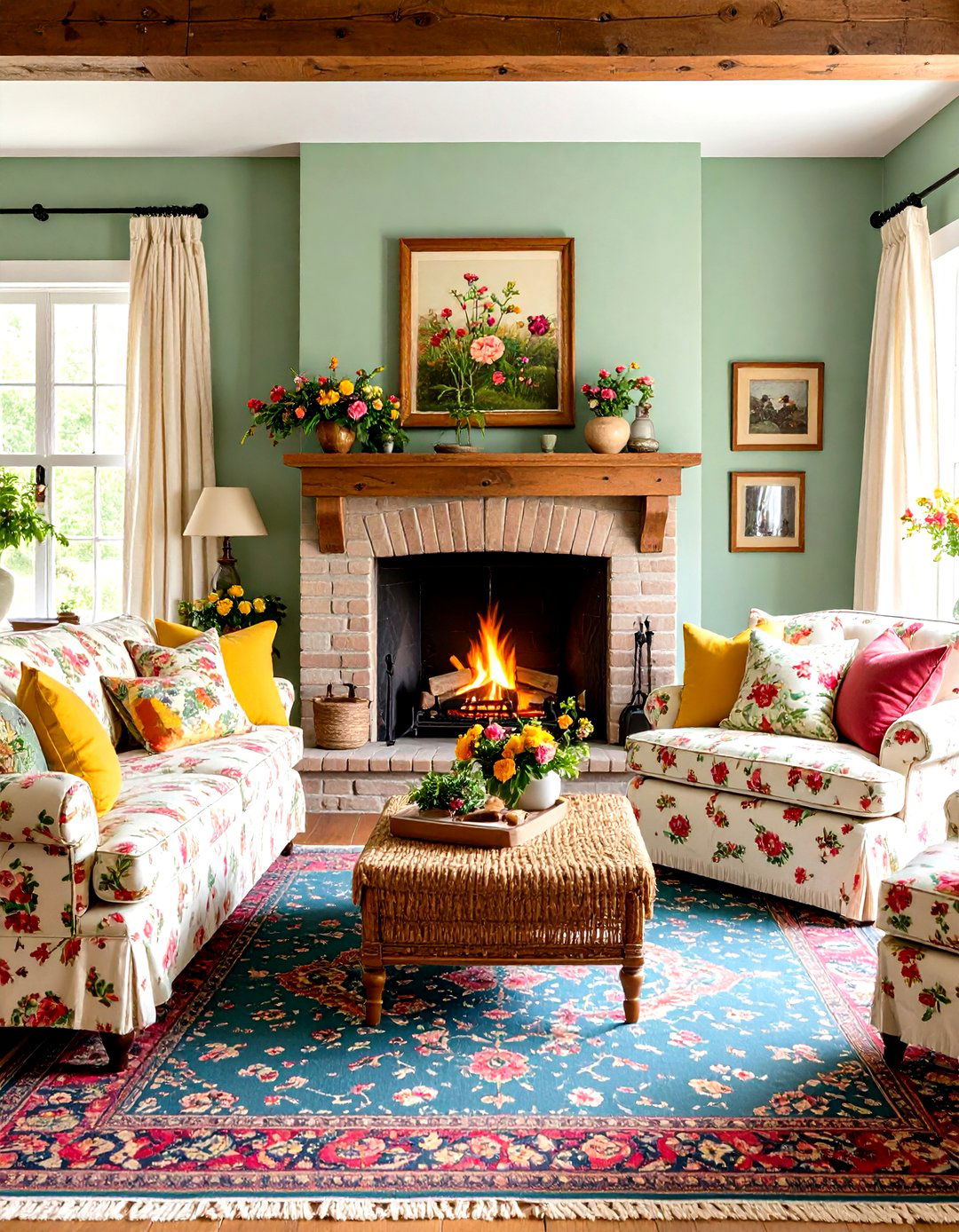
An English country living room embraces cozy sophistication through floral chintz fabrics, antique pine furniture, and warm sage green walls that evoke the countryside. A rolled-arm Chesterfield sofa upholstered in faded rose patterns pairs with mismatched vintage armchairs in coordinating florals and stripes. The brick fireplace features a rustic wooden mantel displaying pewter candlesticks, ceramic pottery, and fresh garden flowers in mason jars. Traditional elements include exposed ceiling beams, botanical prints in weathered frames, and layered Oriental rugs creating textural interest. Window treatments consist of simple linen panels tied with natural rope, while built-in bookcases showcase leather-bound volumes and treasured collectibles. This design captures the unpretentious elegance of English manor houses with lived-in comfort and generational charm.
3. Traditional Victorian Living Room with Ornate Elegance

A Victorian living room showcases the era's love for elaborate ornamentation through deeply carved mahogany furniture, rich velvet upholstery in jewel tones, and intricate wallpaper patterns. The focal point features a black marble fireplace with an ornate carved mantelpiece displaying porcelain figurines and gilt-framed mirrors. Furniture includes a button-tufted velvet sofa in emerald green, paired with burgundy leather wingback chairs featuring nail-head trim and turned wooden legs. Heavy brocade curtains in gold and crimson hang from decorative rods, while multiple Persian rugs layer across dark hardwood floors. Gas-style chandeliers with etched glass shades provide atmospheric lighting, and the walls display family portraits in heavy gold frames. This opulent design reflects Victorian society's prosperity and fascination with decorative arts.
4. Traditional French Provincial Living Room with Romantic Appeal
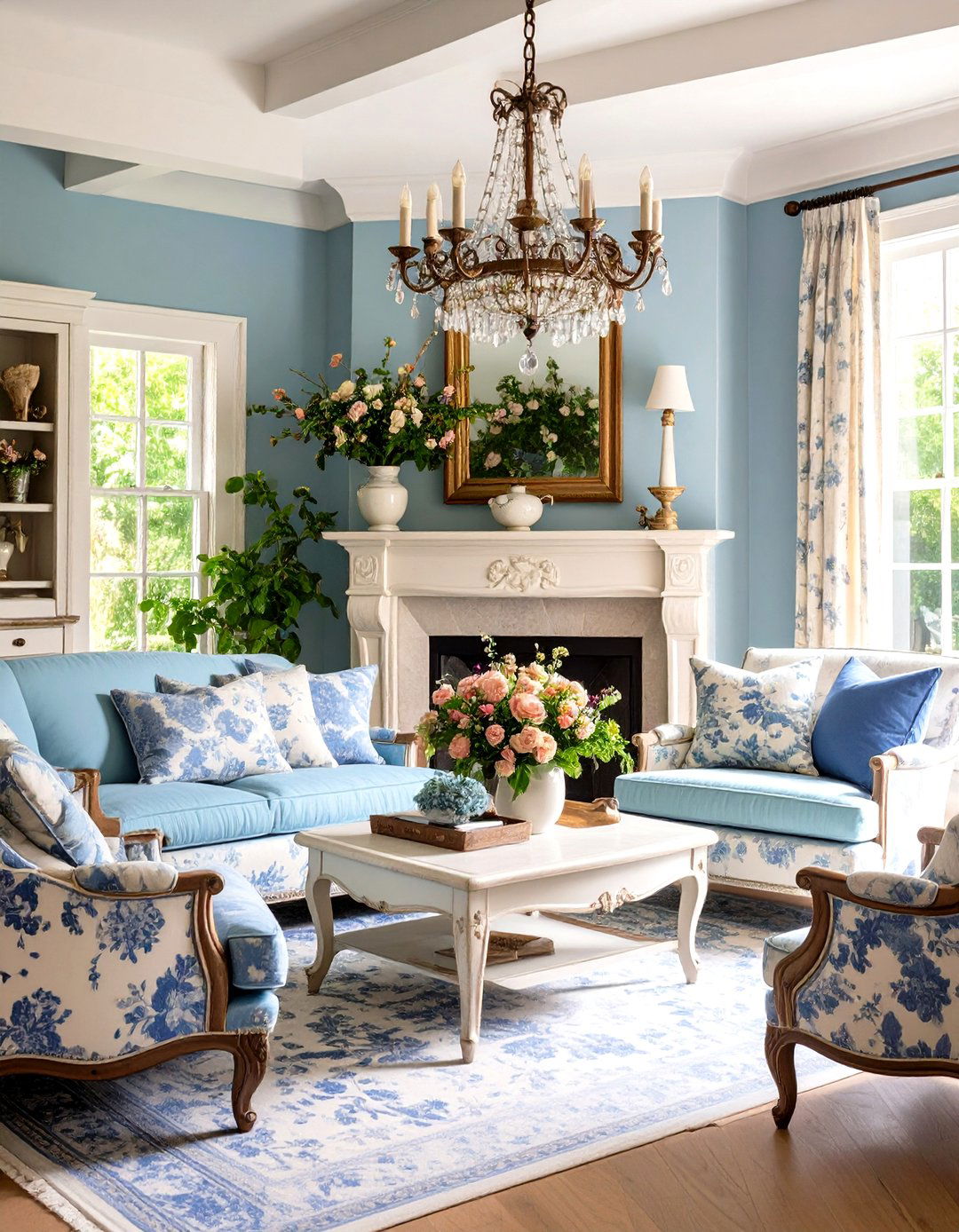
A French provincial living room embodies rustic elegance through distressed painted furniture, toile fabrics, and a soft palette of cream, lavender, and sage green. The seating arrangement features a curved settee upholstered in blue and white toile paired with bergère chairs showcasing cabriole legs and cane backs. A limestone fireplace with a carved wooden mantel displays French ceramics, dried lavender bouquets, and antique brass candlesticks. Traditional elements include painted armoires with chicken wire doors, vintage French market baskets, and linen window treatments with natural hemp ties. The color scheme incorporates weathered blues, soft yellows, and cream whites throughout fabrics and painted finishes. Wrought iron chandeliers and wall sconces provide romantic lighting, while botanical prints and vintage French posters complete this charming countryside aesthetic.
5. Traditional American Federal Living Room with Neoclassical Refinement
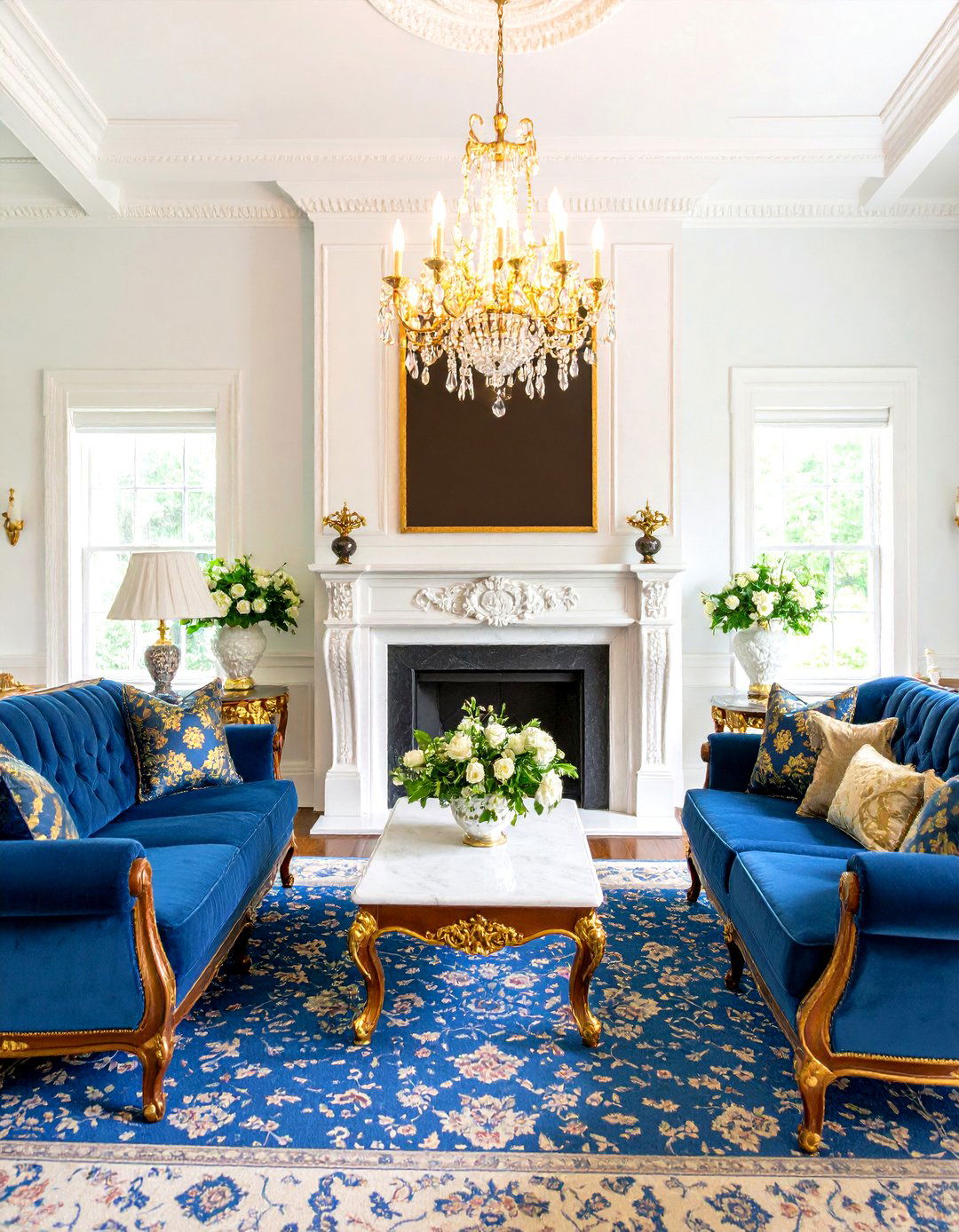
An American Federal living room demonstrates the post-Revolutionary period's embrace of refined neoclassicism through Sheraton and Hepplewhite furniture styles, featuring straight lines and delicate proportions. The space centers around a white marble fireplace with classical columns and dentil molding, flanked by Federal-style side chairs with shield backs and tapered legs. A mahogany dining table serves as a coffee table, surrounded by Duncan Phyfe furniture including lyre-back chairs and a sofa with rolled arms and brass tacks. The patriotic color palette incorporates deep blue, cream, and gold with eagle motifs and classical urns as decorative elements. Inlaid wooden furniture showcases contrasting veneers, while brass hardware and fixtures reflect the period's metalworking excellence. This sophisticated design represents America's emergence as an independent nation with distinctive decorative arts.
6. Traditional Chippendale Living Room with Gothic Revival Elements
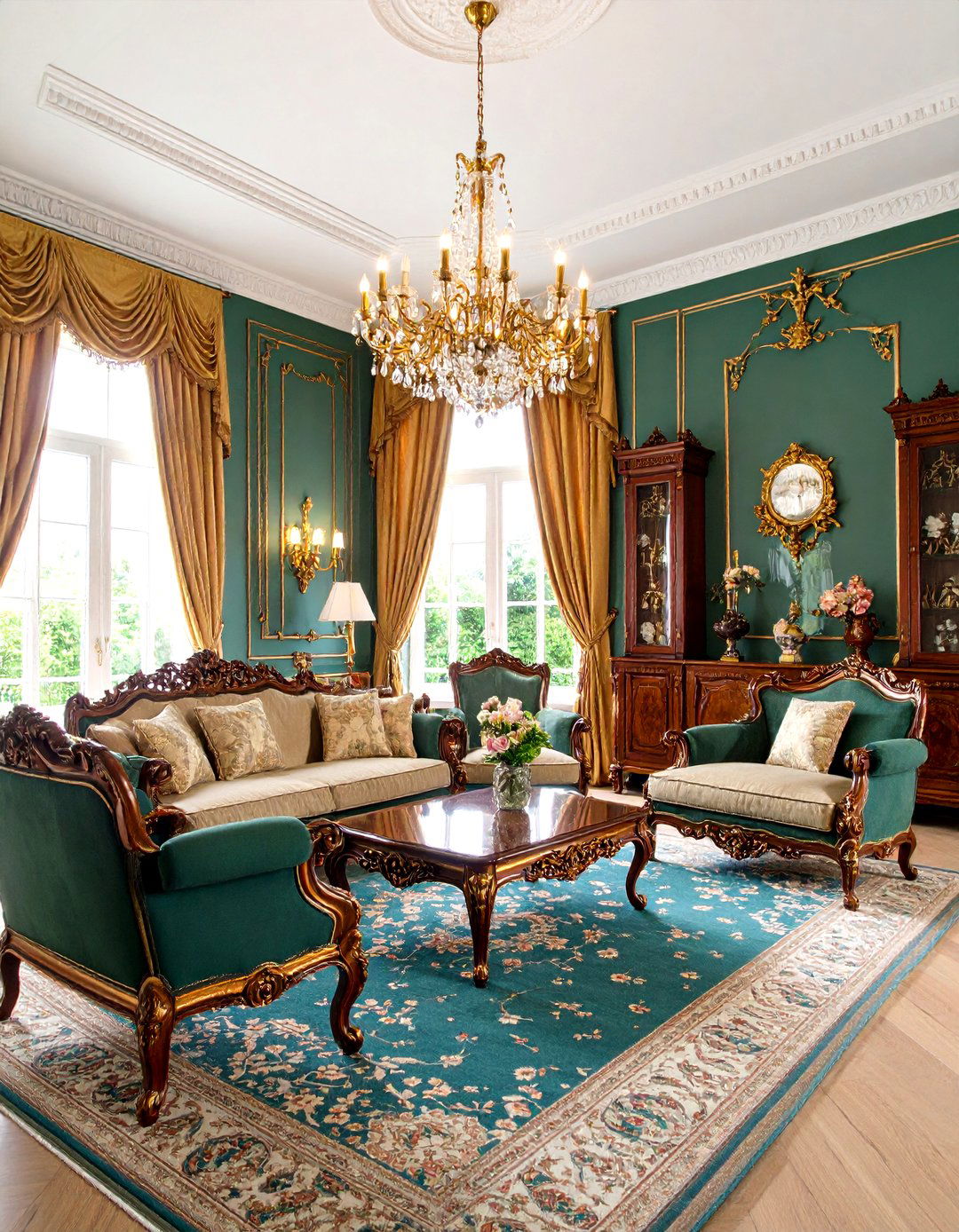
A Chippendale living room celebrates the master craftsman's distinctive style through richly carved mahogany furniture featuring Gothic, Chinese, and French Rococo influences. The centerpiece includes a Chippendale sofa with intricate fretwork and ball-and-claw feet, paired with matching dining chairs showcasing pierced splats and yoke backs. Deep forest green walls provide a dramatic backdrop for the dark wood furniture, while gold silk drapery adds warmth and luxury to tall windows. Traditional elements include a carved mahogany secretary desk with Gothic arches, Chinese-inspired cabinets with pagoda details, and ornate mirror frames featuring rococo scrollwork. Persian carpets in rich burgundy and gold anchor the seating areas, while brass table lamps with pleated shades provide intimate lighting. This design showcases Chippendale's masterful blend of international influences within Georgian proportions.
7. Traditional Queen Anne Living Room with Graceful Curves
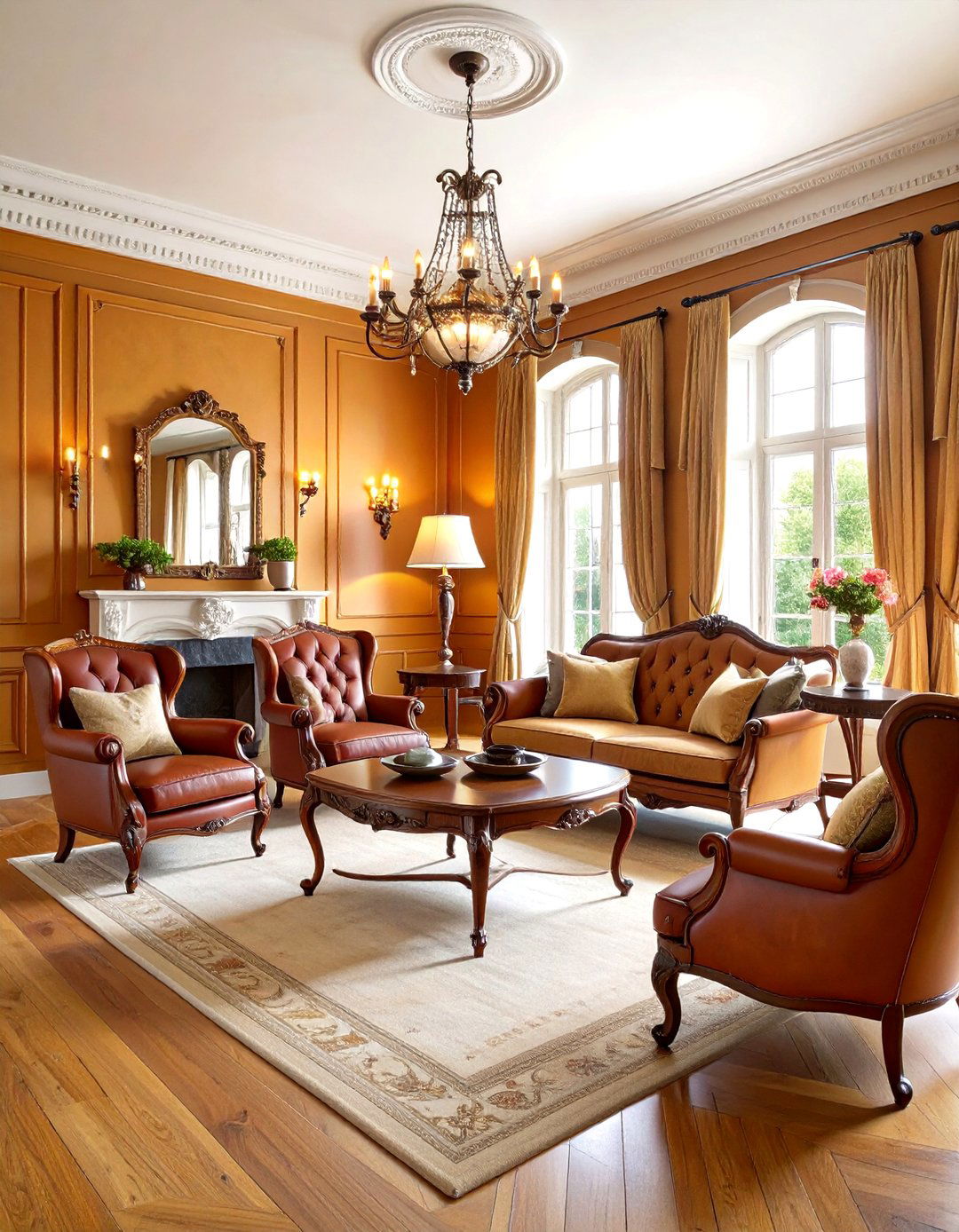
A Queen Anne living room emphasizes the style's signature graceful curves through cabriole legs, vase-shaped chair splats, and flowing lines that defined early 18th-century elegance. The furniture arrangement features a Queen Anne sofa with curved arms and pad feet, accompanied by wingback chairs upholstered in rich burgundy leather with brass nail heads. A walnut tea table with curved legs serves as the coffee table, while matching side tables display porcelain lamps with silk shades. The color palette incorporates warm amber walls, cream moldings, and touches of deep blue in fabrics and accessories. Shell motifs appear in carved furniture details and decorative objects, while scalloped valances frame windows dressed in heavy silk panels. Oriental rugs in muted colors provide foundation, and the overall design reflects the period's transition from baroque heaviness to refined sophistication.
8. Traditional Regency Living Room with Empire Grandeur
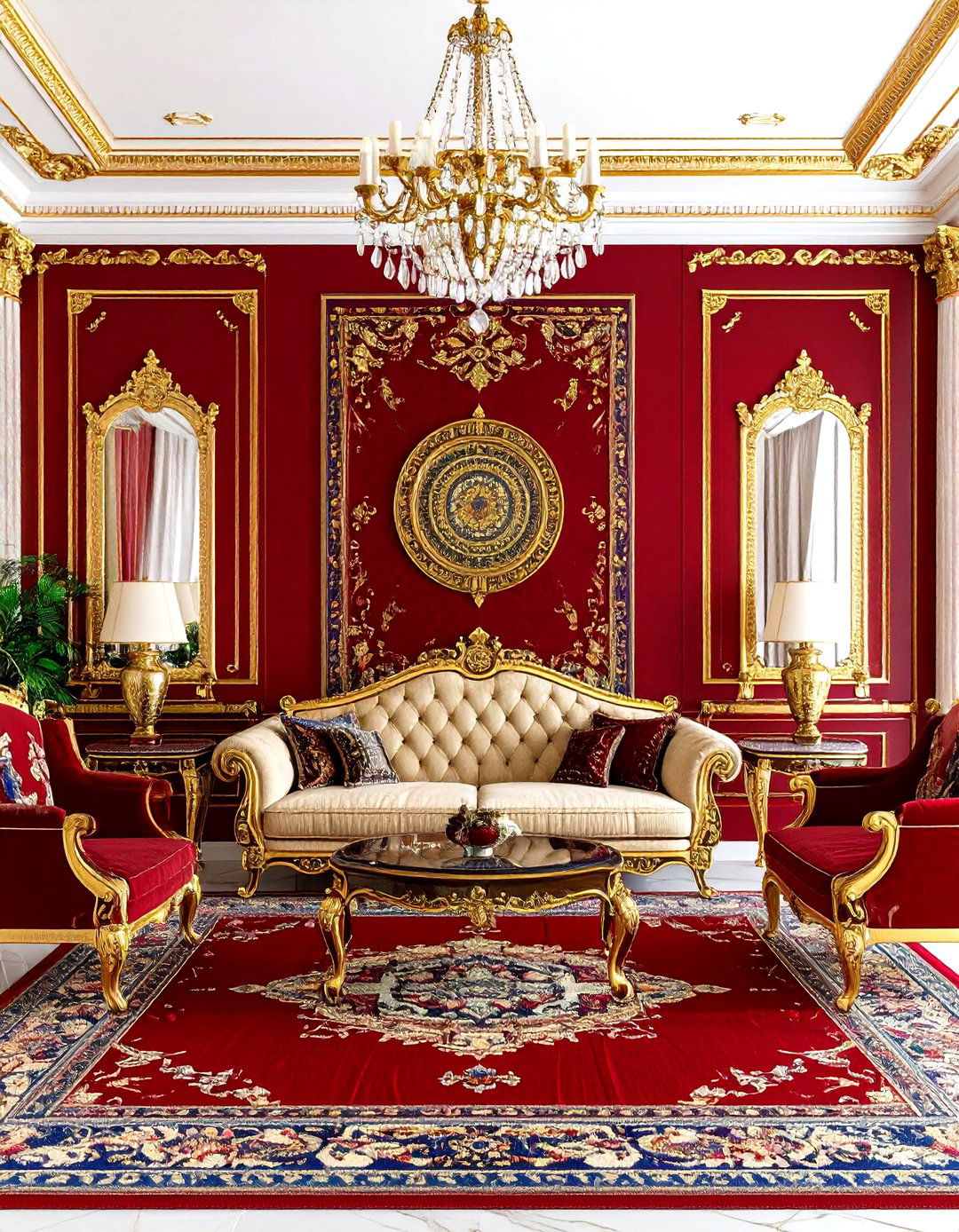
A Regency living room captures the early 19th-century fascination with classical antiquity through Greek and Roman-inspired furniture, bold patterns, and rich color combinations. The seating includes a curved Regency sofa with scroll arms and saber legs, paired with klismos chairs featuring distinctive curved backs and tapered legs. Deep red walls create a dramatic backdrop for gilt-framed mirrors, classical urns, and bronze sculptures representing mythological figures. Traditional elements include Egyptian-inspired motifs, striped wallpaper, and window treatments featuring elaborate swags and jabots in silk and velvet. A marble-topped console table displays classical sculptures and candelabra, while brass chandeliers with crystal drops provide dramatic illumination. The design incorporates black and gold accents throughout, with animal prints and bold geometric patterns reflecting the period's adventurous spirit and imperial confidence.
9. Traditional Tudor Living Room with Medieval Romance

A Tudor living room evokes medieval grandeur through dark oak paneling, heavy wooden beams, and rich tapestries that create an atmosphere of baronial splendor. The furniture includes a massive oak refectory table serving as a coffee table, surrounded by carved wooden chairs with high backs and Gothic arches. Deep burgundy and forest green upholstery covers a large sofa and armchairs positioned around a stone fireplace with an elaborate carved mantelpiece. Traditional elements include wrought iron chandeliers, stained glass windows, and medieval-inspired tapestries depicting hunting scenes and heraldic symbols. The color palette emphasizes rich jewel tones against dark wood, while Persian rugs in deep reds and golds warm the stone or hardwood floors. Brass accents appear in lighting fixtures and decorative objects, creating an authentic medieval atmosphere with modern comfort.
10. Traditional Sheraton Living Room with Neoclassical Simplicity
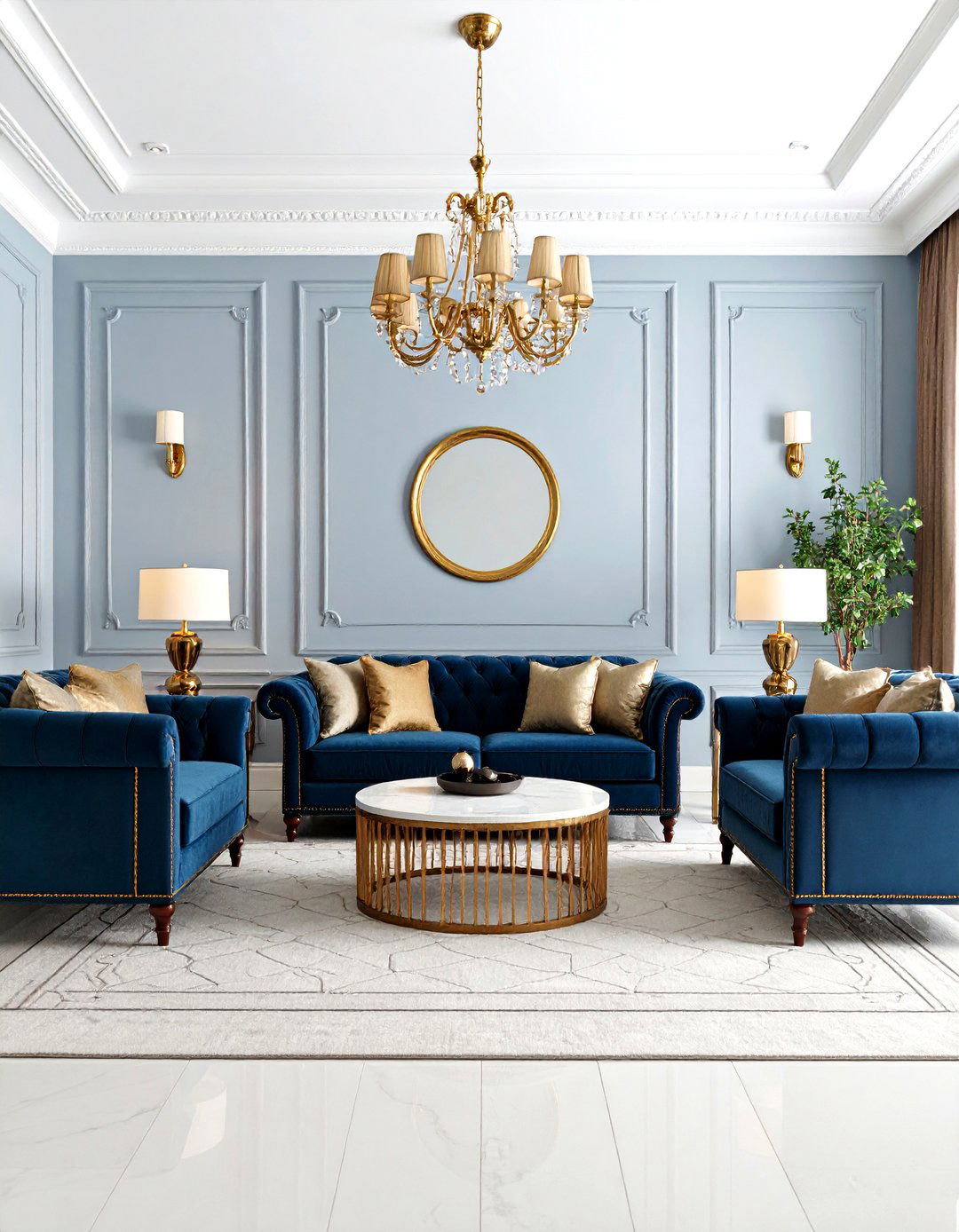
A Sheraton living room demonstrates the style's characteristic restraint through straight lines, delicate proportions, and minimal ornamentation that epitomizes late 18th-century refinement. The furniture features a Sheraton sofa with square tapered legs and geometric inlay patterns, accompanied by side chairs showcasing rectangular backs and refined proportions. Light mahogany and satinwood furniture creates elegant contrast against soft blue-gray walls, while brass hardware and inlay details provide subtle decoration. Traditional elements include a bow-front sideboard serving as a media console, pembroke tables with drop leaves, and delicate window treatments in silk and muslin. The color palette incorporates pale yellows, soft blues, and cream whites throughout the space, while classical urns and swags provide restrained decorative motifs. This sophisticated design reflects the Federal period's embrace of republican simplicity and classical ideals.
11. Traditional Colonial Williamsburg Living Room with Historical Authenticity
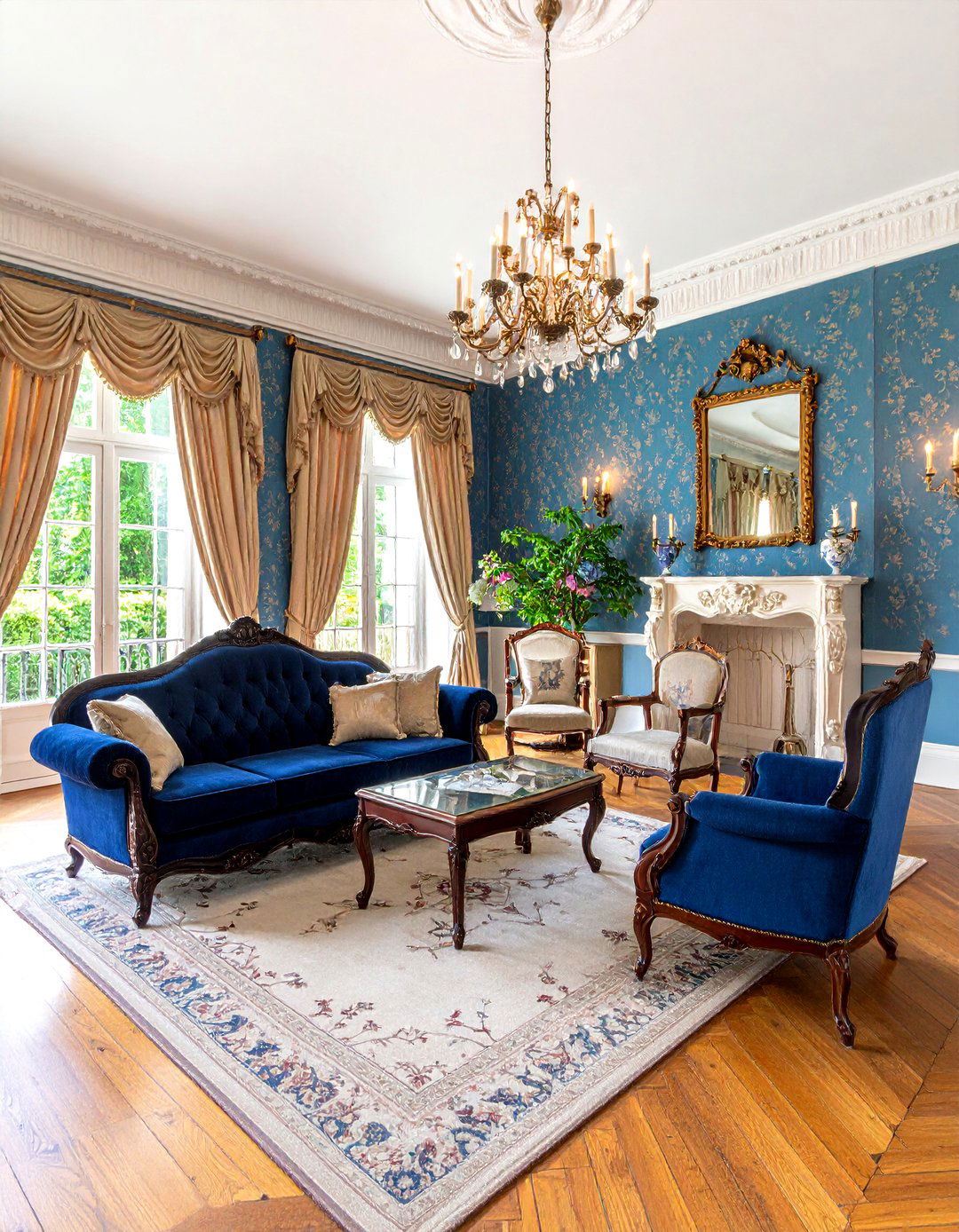
A Colonial Williamsburg living room recreates 18th-century Virginia elegance through authentic reproductions, traditional craftsmanship, and documentary fabrics that transport visitors to America's colonial capital. The furniture arrangement includes a camelback sofa upholstered in resist-dyed indigo fabric, paired with ladder-back chairs and a gateleg table serving as occasional seating. Prussian blue walls with white chair rails create a historically accurate backdrop for period accessories including delft pottery, pewter candlesticks, and hand-woven textiles. Traditional elements feature wide-plank floors with braided rugs, window treatments in checked homespun, and a cooking fireplace with period iron implements. The color palette draws from 18th-century pigments including verdigris green, chrome yellow, and lampblack, while hand-forged hardware and simple wooden furniture reflect colonial craftsmanship and practical elegance.
12. Traditional English Library Living Room with Scholarly Elegance

An English library living room combines the comfort of a drawing room with the sophistication of a gentleman's study through floor-to-ceiling bookcases, leather furniture, and rich burgundy color schemes. The seating includes a deep leather Chesterfield sofa with button tufting and rolled arms, paired with wingback chairs in coordinating leather positioned around a mahogany writing desk doubling as a coffee table. Traditional elements include built-in bookcases filled with leather-bound volumes, a marble fireplace with classical details, and brass library lamps providing focused reading light. The color palette emphasizes deep hunter green walls, rich burgundy leather, and gold accents throughout brass hardware and picture frames. Persian rugs in traditional patterns anchor the space, while oil paintings of landscapes and portraits create an atmosphere of scholarly refinement and intellectual pursuit.
13. Traditional Formal Parlor Living Room with Victorian Revival
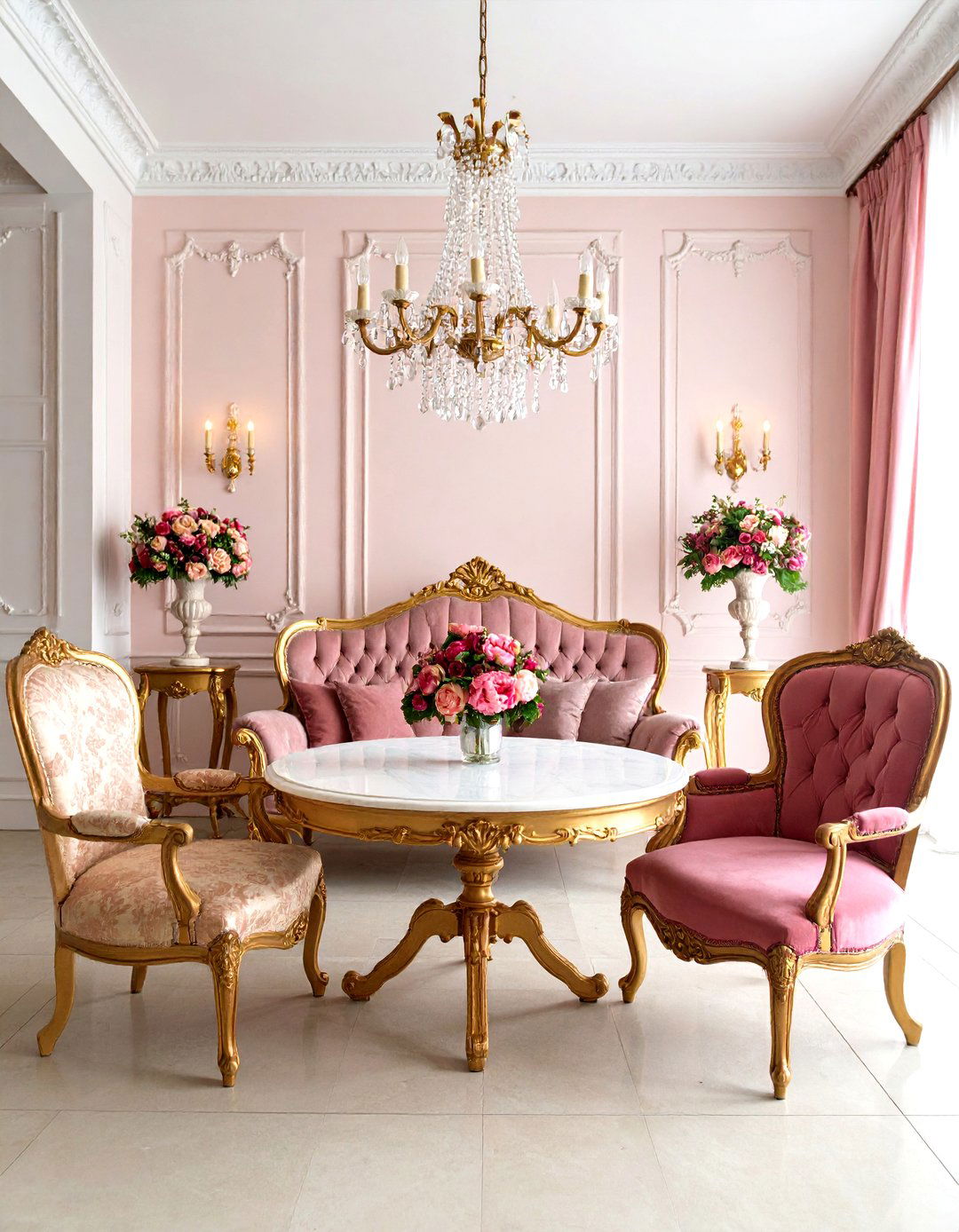
A formal parlor living room revives the Victorian tradition of elegant entertaining through carefully arranged furniture, luxurious fabrics, and sophisticated decorative arts that create spaces for refined social interaction. The seating arrangement features a medallion-back sofa in silk damask paired with balloon-back chairs and a marble-topped center table for formal tea service. Deep rose walls provide a romantic backdrop for gold-framed mirrors, porcelain collections, and fresh flower arrangements in crystal vases. Traditional elements include heavy silk curtains with elaborate tiebacks, Persian rugs in muted colors, and a white marble fireplace with decorative tiles and brass fittings. The lighting includes crystal chandeliers and silk-shaded table lamps creating intimate conversation areas, while the overall design emphasizes gracious hospitality and social refinement through carefully curated decorative objects and symmetrical furniture arrangements.
14. Traditional Fireplace-Focused Living Room with Hearth Centrality
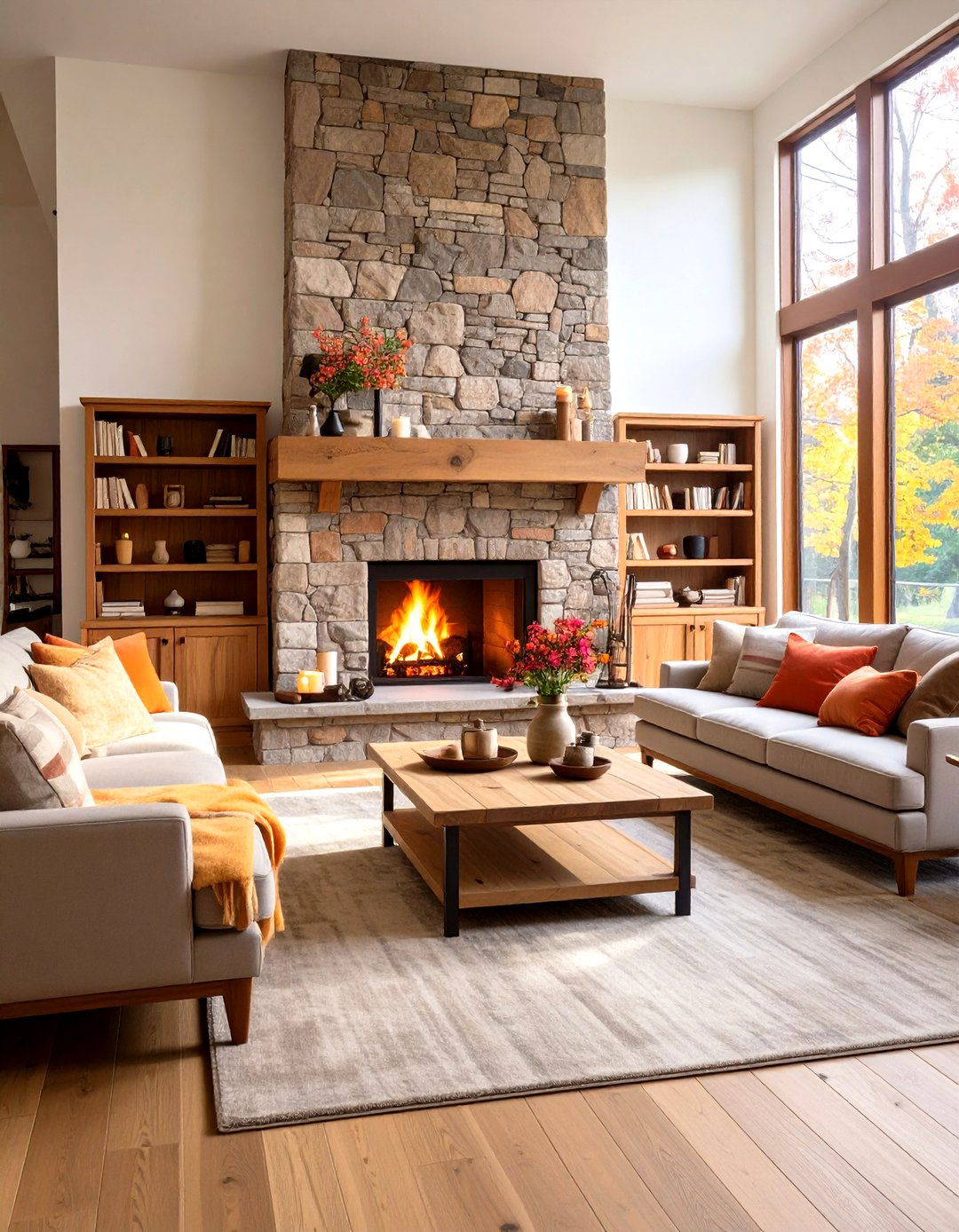
A fireplace-focused living room demonstrates traditional design's emphasis on the hearth as the social and visual center through symmetrical furniture arrangements and complementary architectural details. The stone or brick fireplace features a substantial wooden mantel displaying family photographs, antique clocks, and seasonal decorations that change throughout the year. Matching sofas face each other across a Persian rug, with additional seating provided by wingback chairs and a bench positioned to take advantage of the fire's warmth. Traditional elements include built-in bookcases flanking the fireplace, brass andirons and fire tools, and window treatments that frame views while maintaining the hearth's prominence. The color palette incorporates warm earth tones including cream, gold, and deep green that complement the natural materials, while the lighting design uses table lamps and wall sconces to supplement the fireplace's natural glow.
15. Traditional Persian Rug Foundation Living Room with Oriental Splendor

A Persian rug foundation living room uses an exceptional antique carpet as the design starting point, with furniture, colors, and accessories carefully chosen to complement the rug's intricate patterns and rich colors. The seating includes a neutral sofa in cream or beige linen that showcases the rug's beauty, paired with accent chairs in colors drawn from the carpet's palette including deep blue, burgundy, or gold. Traditional furniture features mahogany pieces with brass hardware and classical proportions that honor the rug's formal character. The color scheme throughout the room echoes the carpet's hues through wall colors, drapery fabrics, and decorative accessories including porcelain, brass, and crystal objects. Additional Oriental textiles appear in throw pillows and table runners, while the lighting design uses brass fixtures and warm bulbs to enhance the rug's rich colors and intricate craftsmanship.
16. Traditional Antique Collection Living Room with Heirloom Display

An antique collection living room showcases treasured family heirlooms and carefully curated antiques through thoughtful display techniques and supportive decorative elements that create a personal museum atmosphere. The furniture includes period pieces from different eras arranged to create conversation areas while highlighting individual objects including silver tea services, porcelain collections, and vintage books. Built-in display cases with glass doors protect delicate items, while open shelving showcases pottery, small sculptures, and decorative boxes with appropriate lighting to prevent damage. Traditional elements include neutral wall colors that don't compete with the collections, quality reproduction furniture that complements antique pieces, and window treatments that filter harmful UV light while maintaining elegant appearance. The overall design balances preservation needs with livability, creating spaces where collections can be enjoyed daily while maintaining their historical integrity.
17. Traditional Symmetrical Seating Living Room with Balanced Arrangement
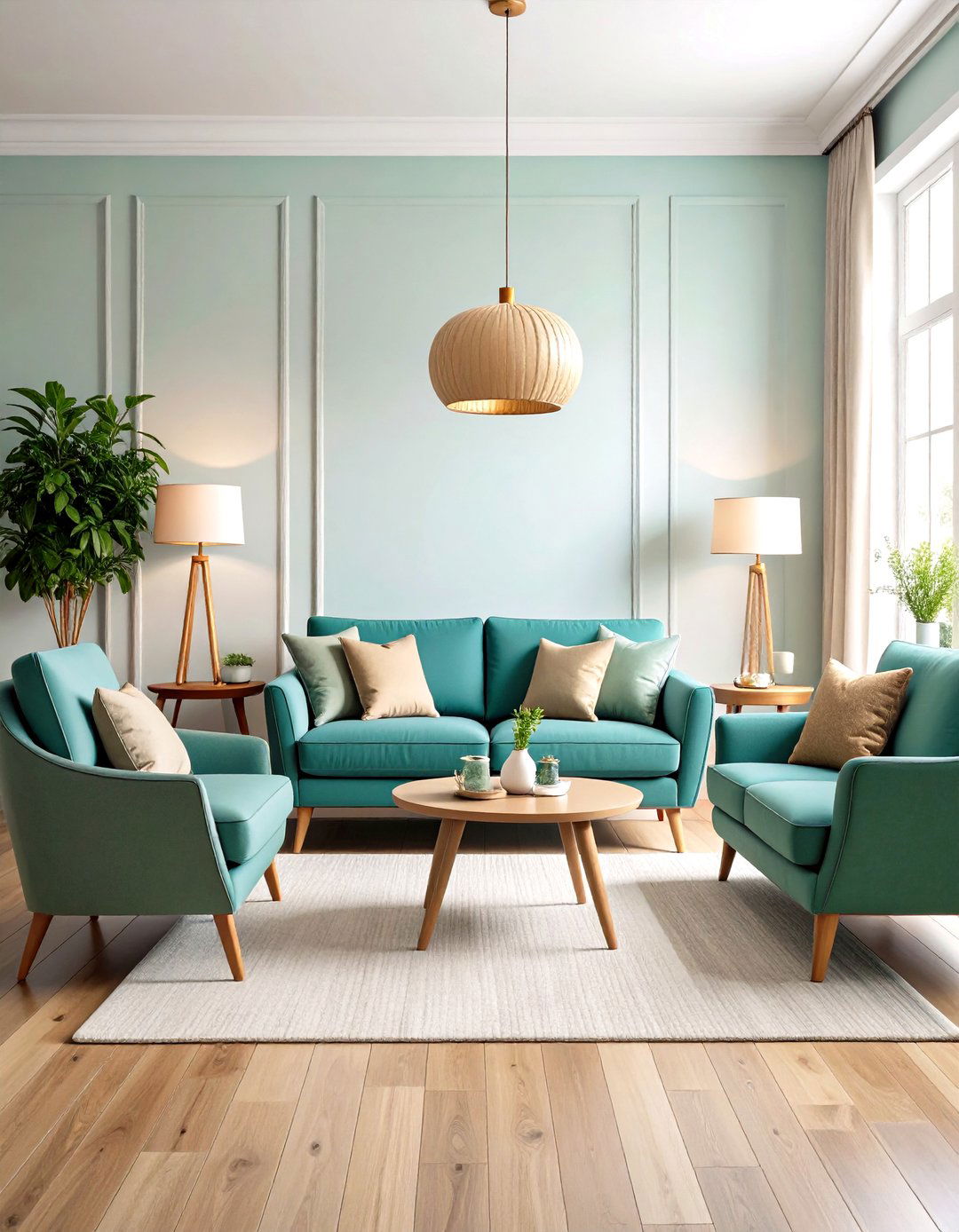
A symmetrical seating living room demonstrates traditional design's emphasis on balance and order through carefully planned furniture arrangements that create formal yet comfortable conversation areas. Twin sofas face each other across a central coffee table, with matching end tables and table lamps providing perfect symmetry and functional lighting. Additional seating includes identical wingback chairs positioned at angles to encourage conversation while maintaining the room's balanced composition. Traditional elements include matching window treatments on either side of a central fireplace, paired artwork or mirrors creating visual anchors, and accessories arranged in balanced groupings throughout the space. The color palette uses coordinated fabrics and finishes that enhance the symmetrical arrangement without creating monotony, while the lighting design provides even illumination that supports both daytime and evening use of the formal seating areas.
18. Traditional Rich Jewel Tone Living Room with Luxurious Color

A rich jewel tone living room embraces traditional design's love of saturated colors through emerald green, sapphire blue, and ruby red elements that create dramatic yet sophisticated interiors. The seating includes a deep emerald velvet sofa paired with sapphire blue wingback chairs and ruby red accent pillows that showcase the jewel tone palette. Traditional furniture in dark mahogany or black lacquer provides rich contrast while gold leaf details in picture frames and decorative objects add luminous accents. The color scheme extends to window treatments in coordinating silks and velvets, while Persian rugs incorporate all the jewel tones in traditional patterns. Brass chandeliers and table lamps with silk shades provide warm lighting that enhances the rich colors, while the overall design creates an atmosphere of opulent comfort that reflects traditional design's embrace of luxury and visual richness.
19. Traditional Classic Neutral Living Room with Timeless Elegance
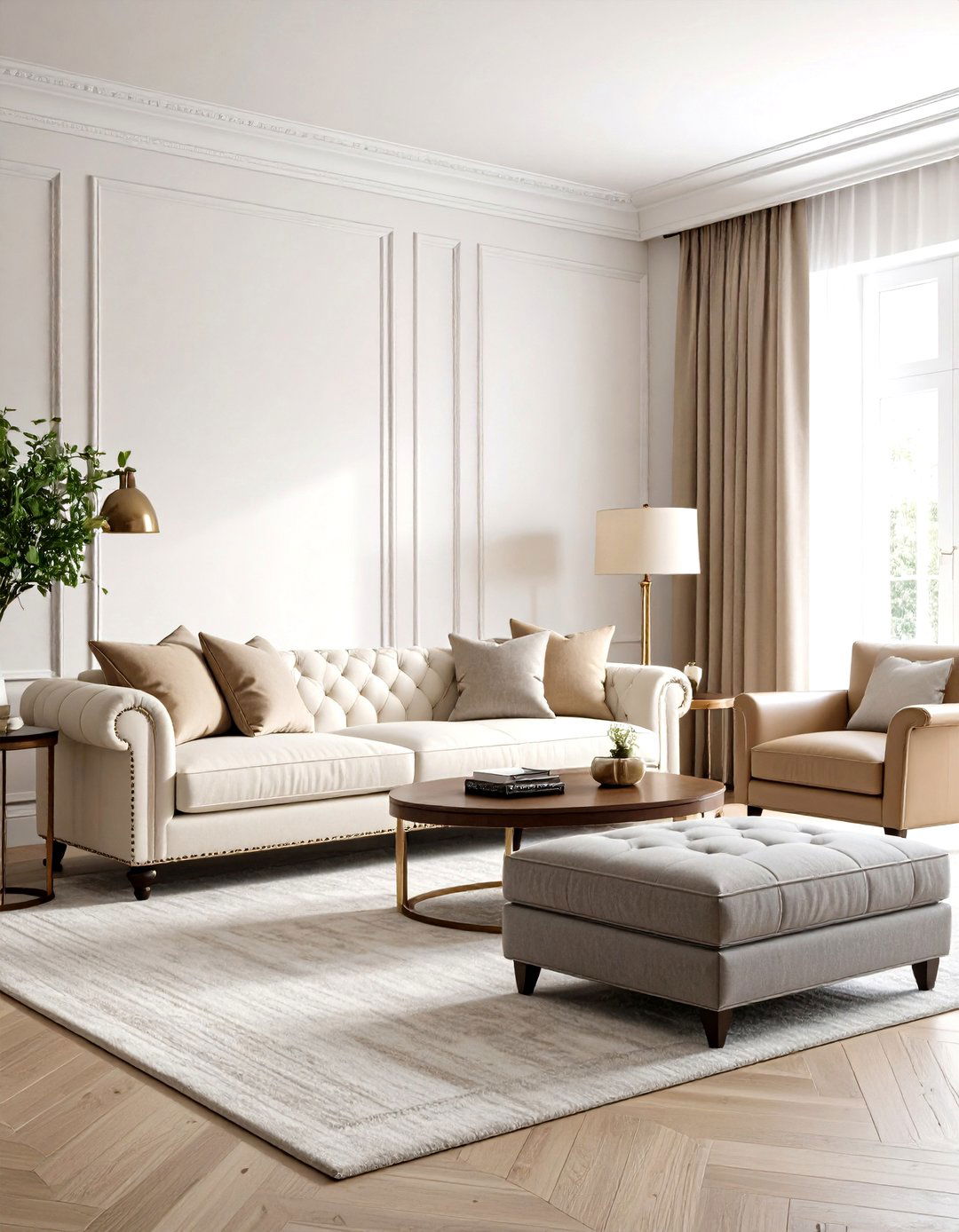
A classic neutral living room achieves traditional elegance through sophisticated combinations of cream, beige, and soft gray colors that provide a timeless foundation for quality furniture and refined accessories. The seating includes a cream linen sofa with rolled arms and nail head trim, paired with beige leather wingback chairs and a gray wool ottoman that serves as both seating and coffee table. Traditional elements include mahogany occasional tables with brass hardware, silk drapery in coordinating neutral tones, and Persian rugs in muted colors that anchor the seating areas. The neutral palette allows attention to focus on architectural details including crown molding, wainscoting, and built-in bookcases painted in soft white. Quality textiles in linen, silk, and wool add texture and interest while maintaining the sophisticated color scheme, creating spaces that feel both elegant and comfortable for daily living.
20. Traditional Pattern Play Living Room with Coordinated Textiles
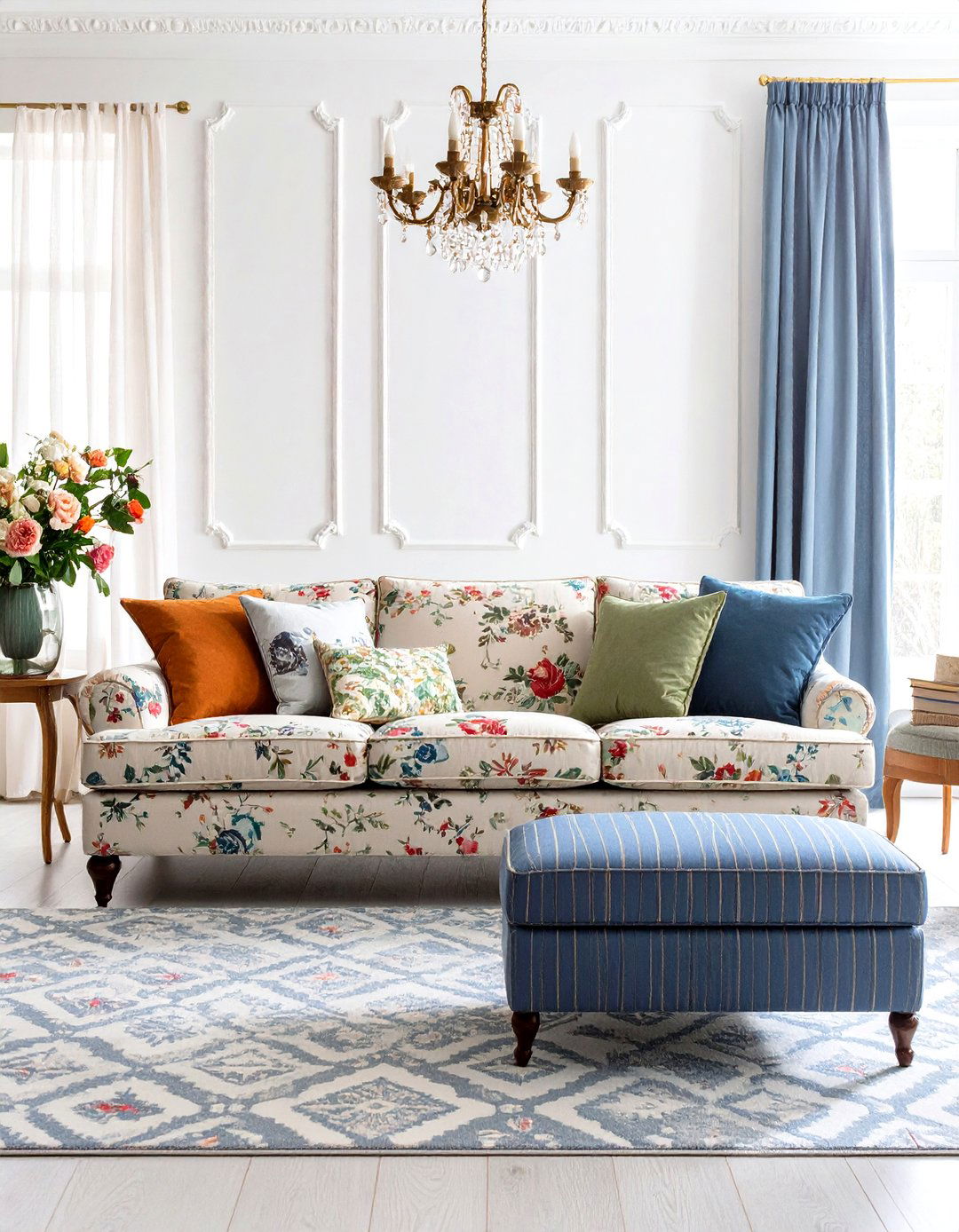
A pattern play living room demonstrates traditional design's skillful use of multiple patterns through careful coordination of florals, stripes, and geometric designs that create visual interest without overwhelming the space. The seating includes a floral chintz sofa paired with striped wingback chairs and geometric patterned ottomans, all coordinated through a common color palette of blue, green, and cream. Traditional elements include toile drapery panels with coordinating valances, Persian rugs featuring traditional motifs, and throw pillows mixing different patterns in complementary scales. The key to successful pattern mixing lies in varying the scale of patterns while maintaining color consistency throughout all textiles and accessories. Quality furniture in traditional styles provides solid foundations for the patterned fabrics, while neutral wall colors allow the patterns to take center stage without creating visual chaos, resulting in rooms that feel both lively and sophisticated.
Conclusion:
Traditional living rooms continue to captivate homeowners with their timeless appeal and sophisticated comfort. These twenty design approaches demonstrate how historical styles can be adapted for contemporary living while maintaining their essential character. From Georgian symmetry to Victorian opulence, each traditional style offers unique elements that create distinctive yet cohesive interiors. The key to successful traditional design lies in understanding the principles behind each historical period while adapting them to modern lifestyles. Whether embracing formal elegance or comfortable sophistication, traditional living rooms provide enduring beauty that transcends changing trends, creating spaces where families can gather and entertain with grace and style for generations to come.


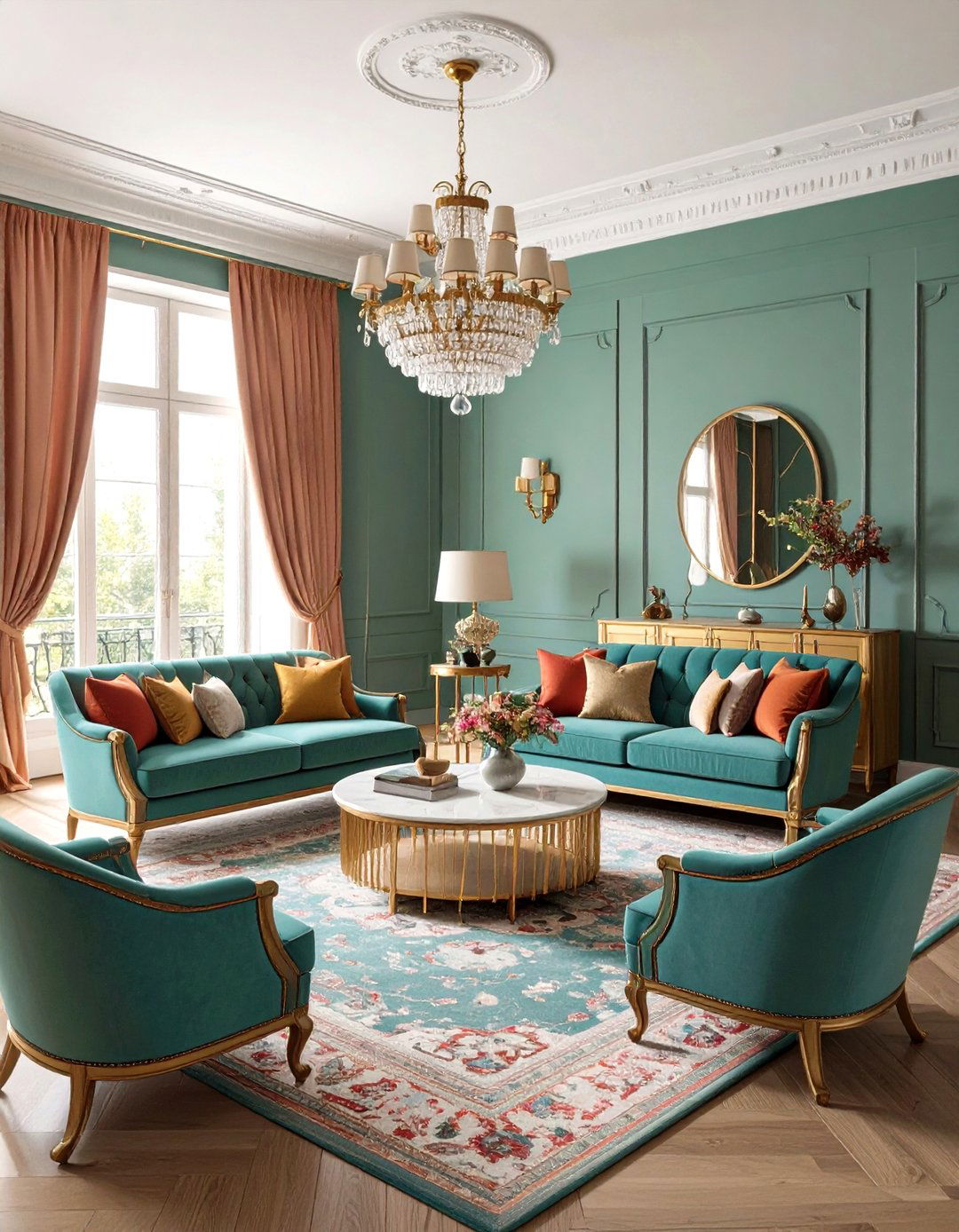
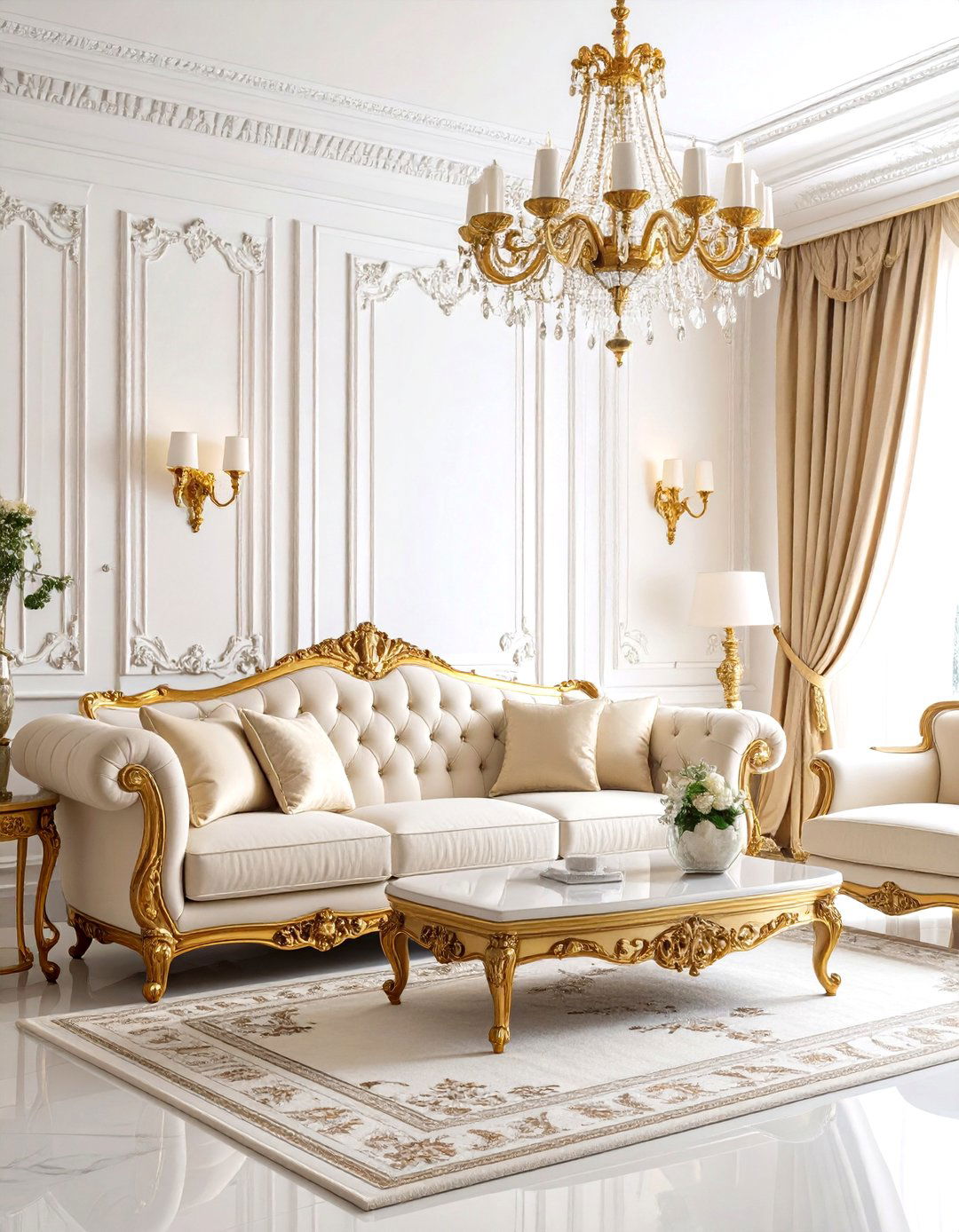
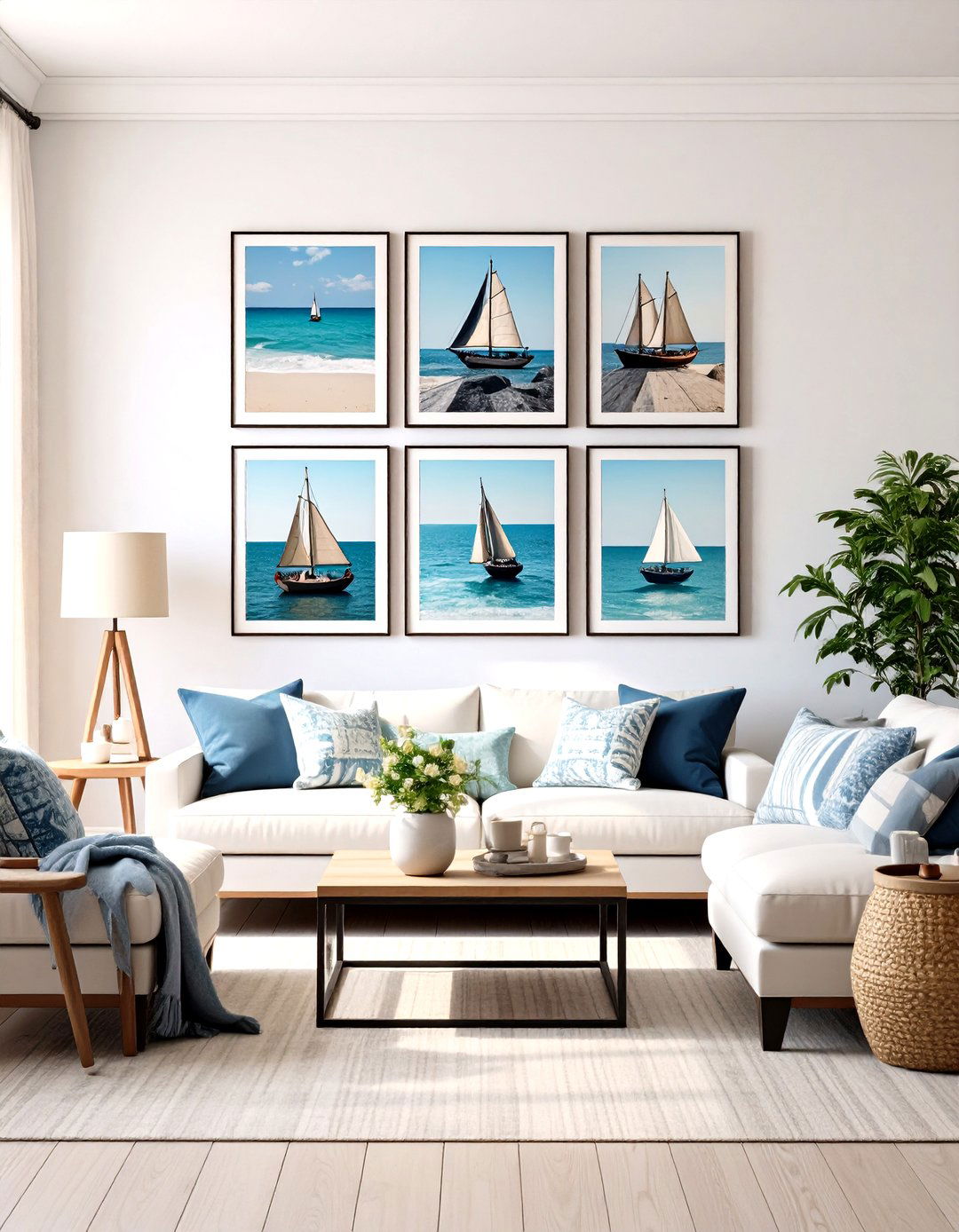
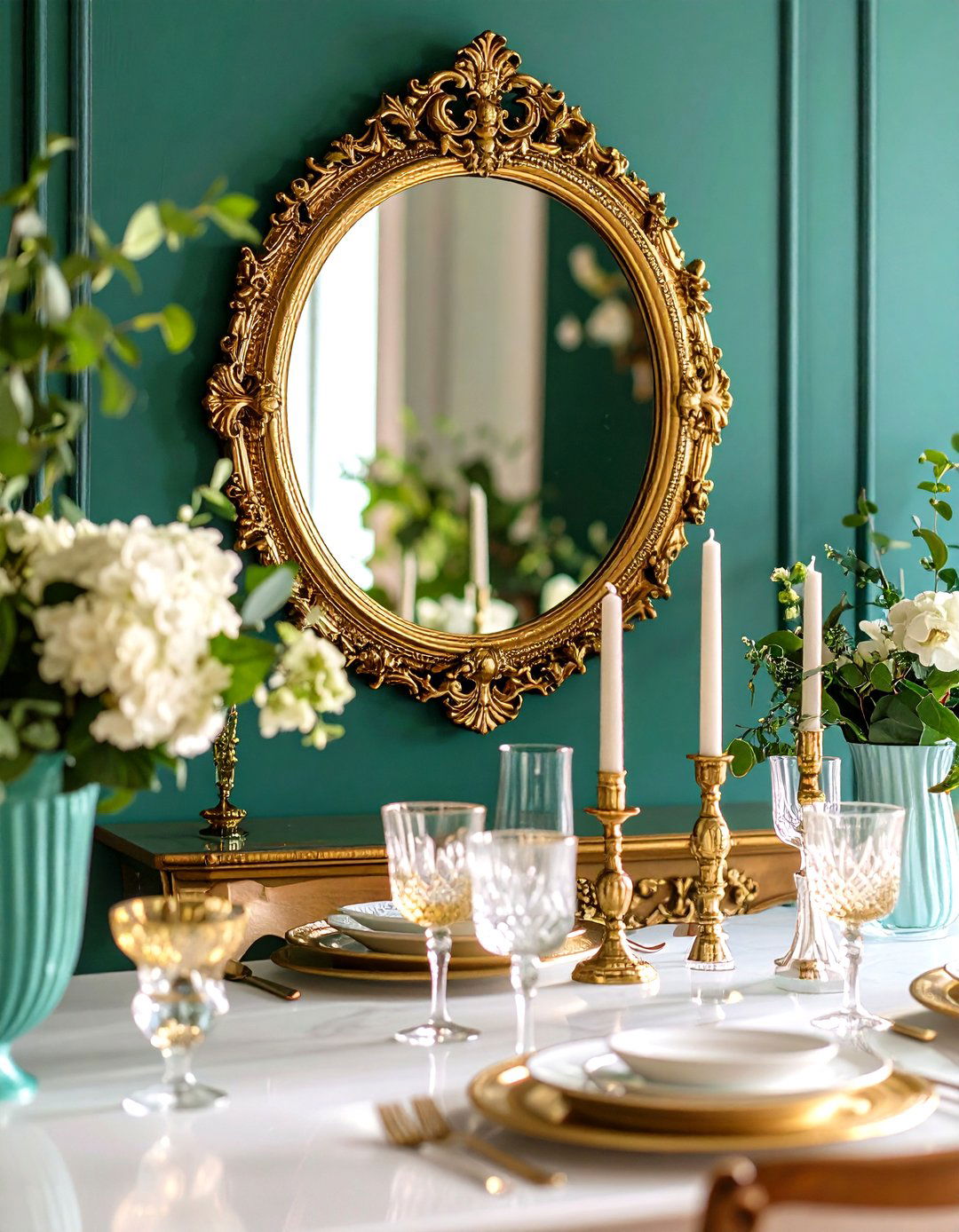
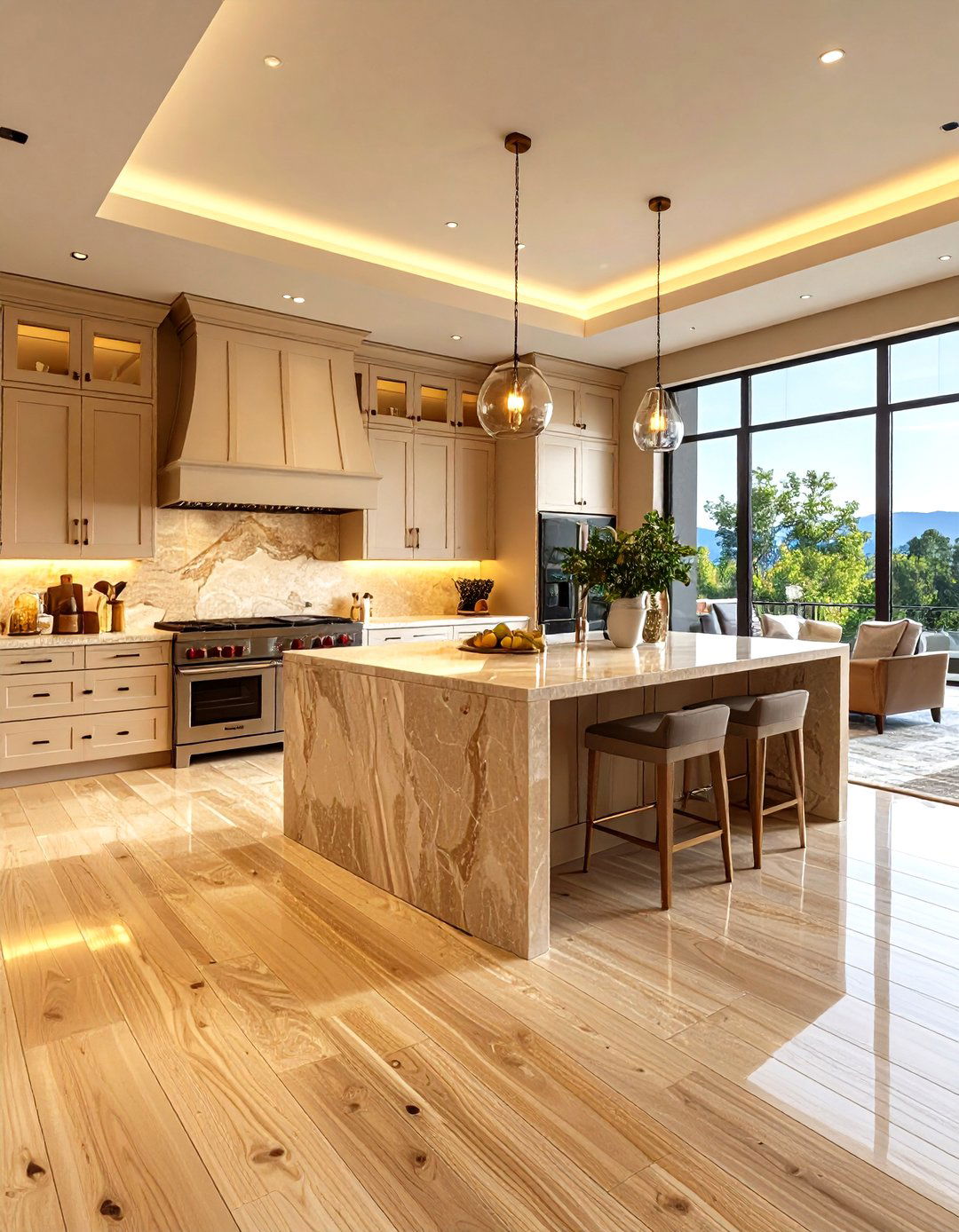
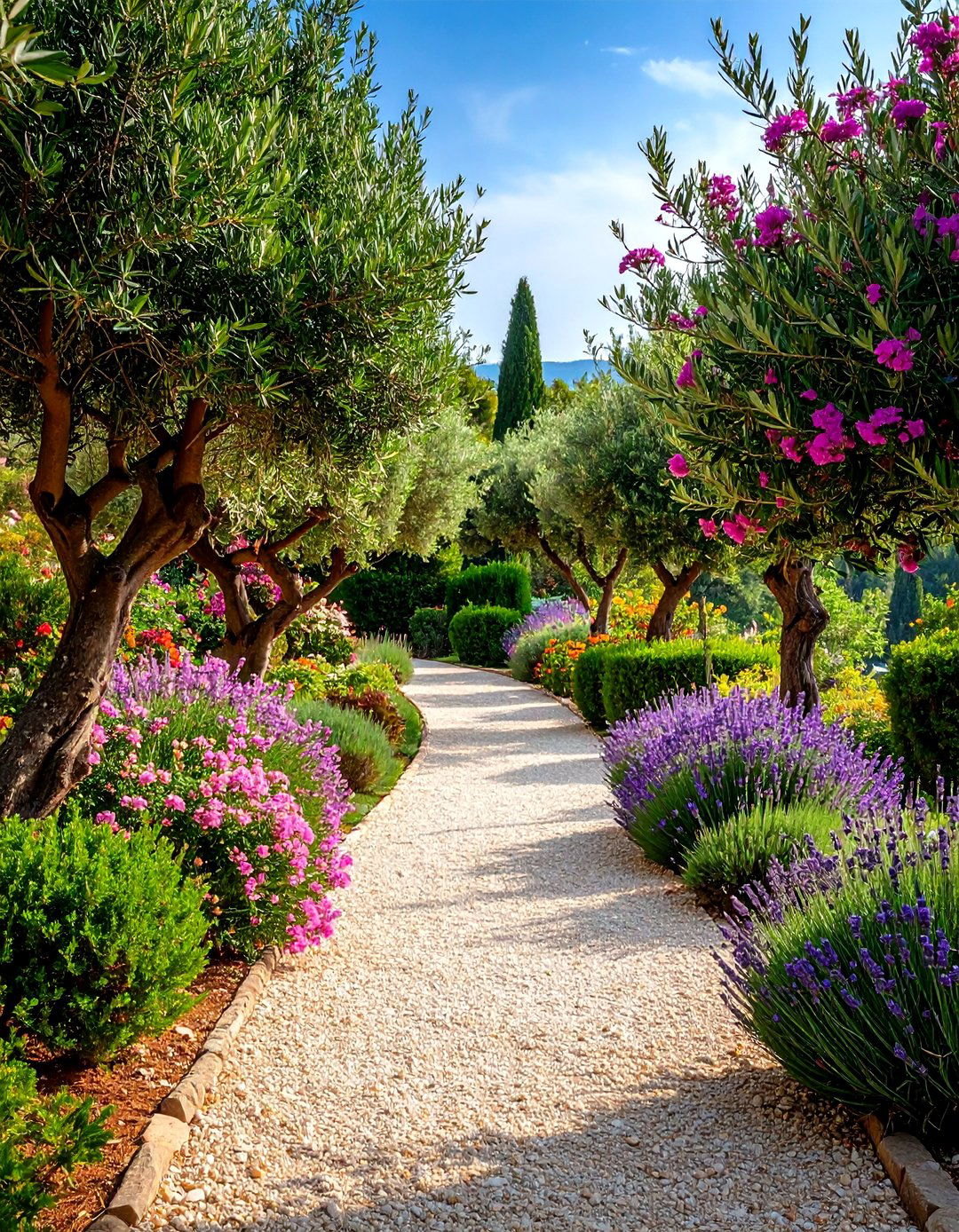
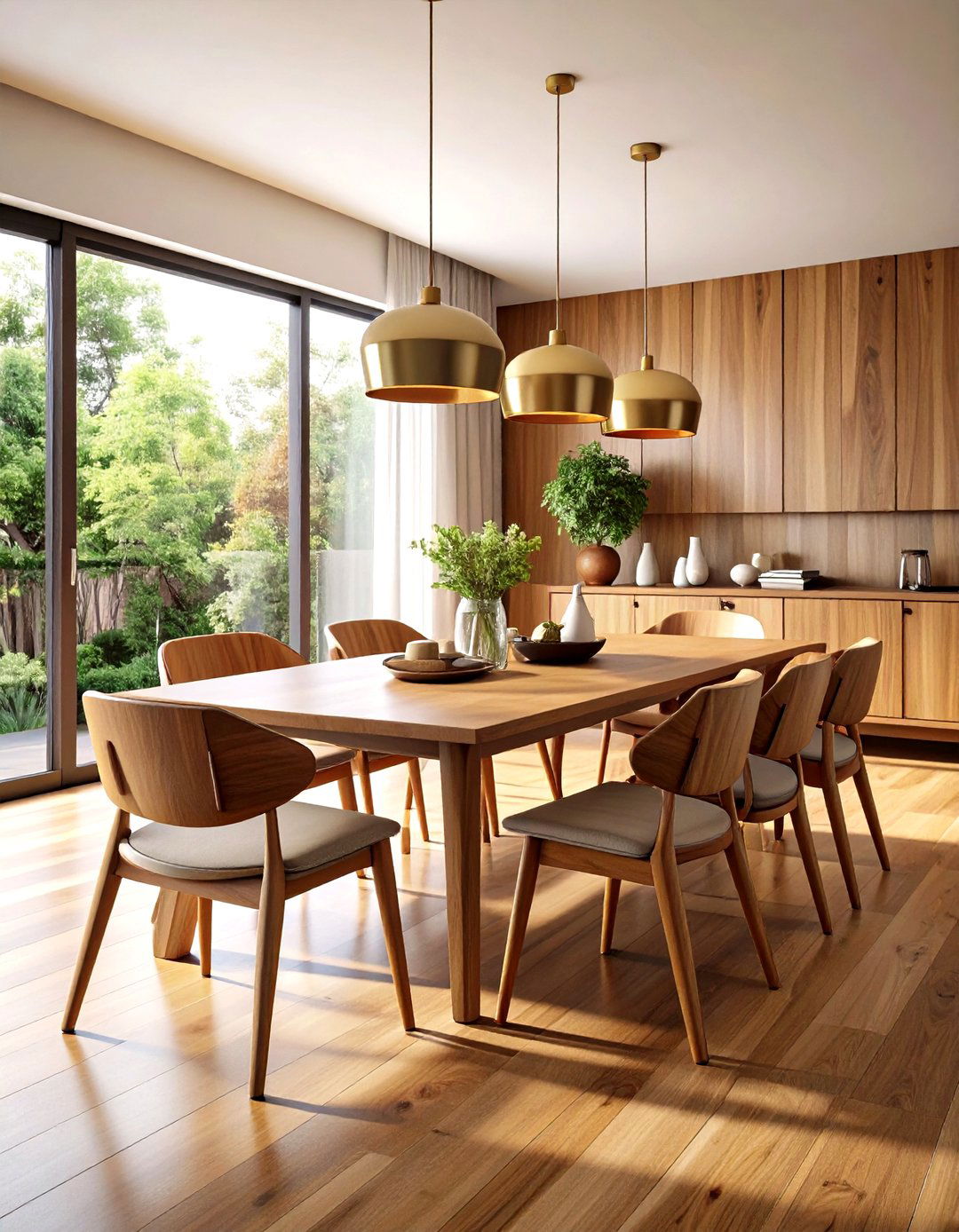

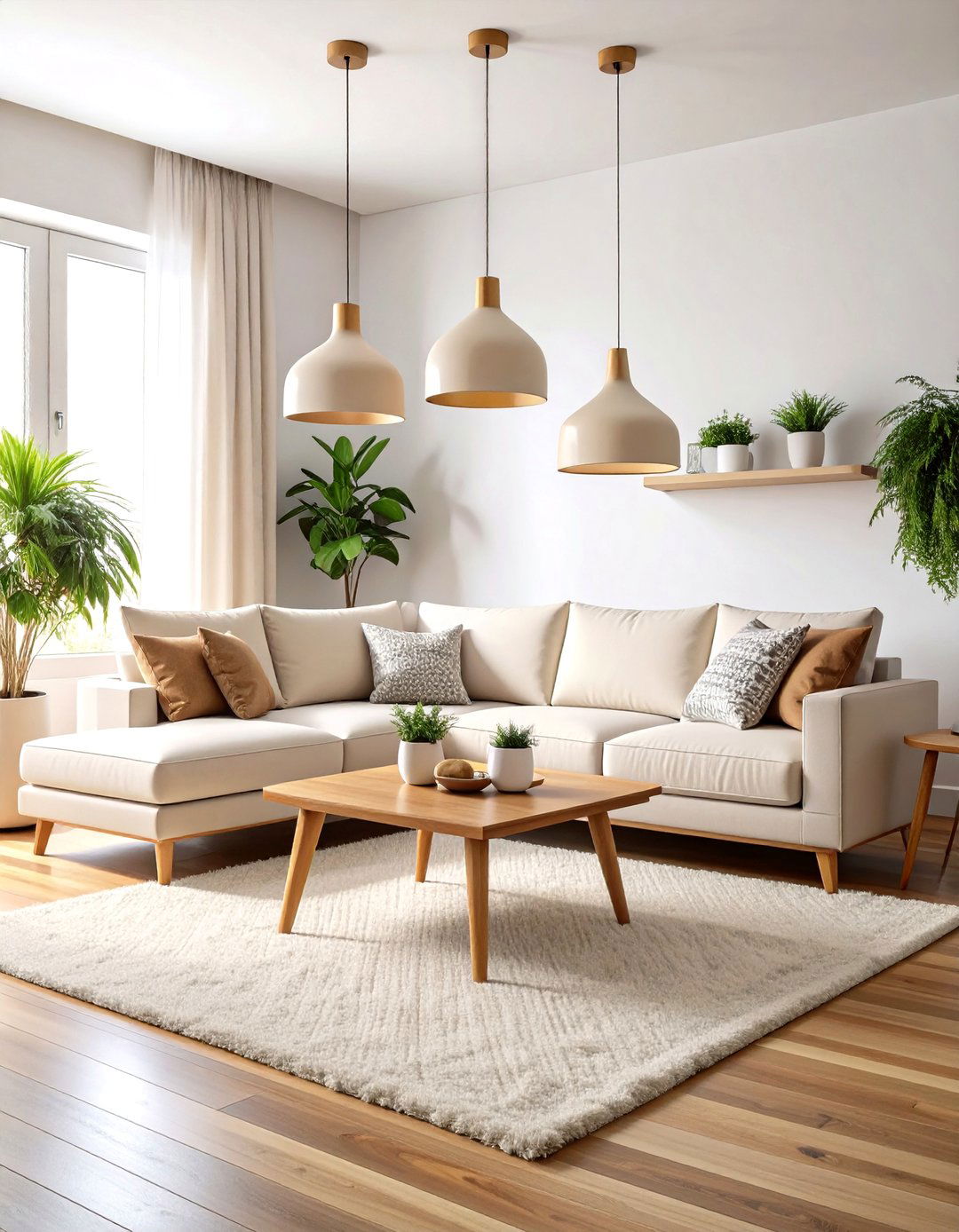
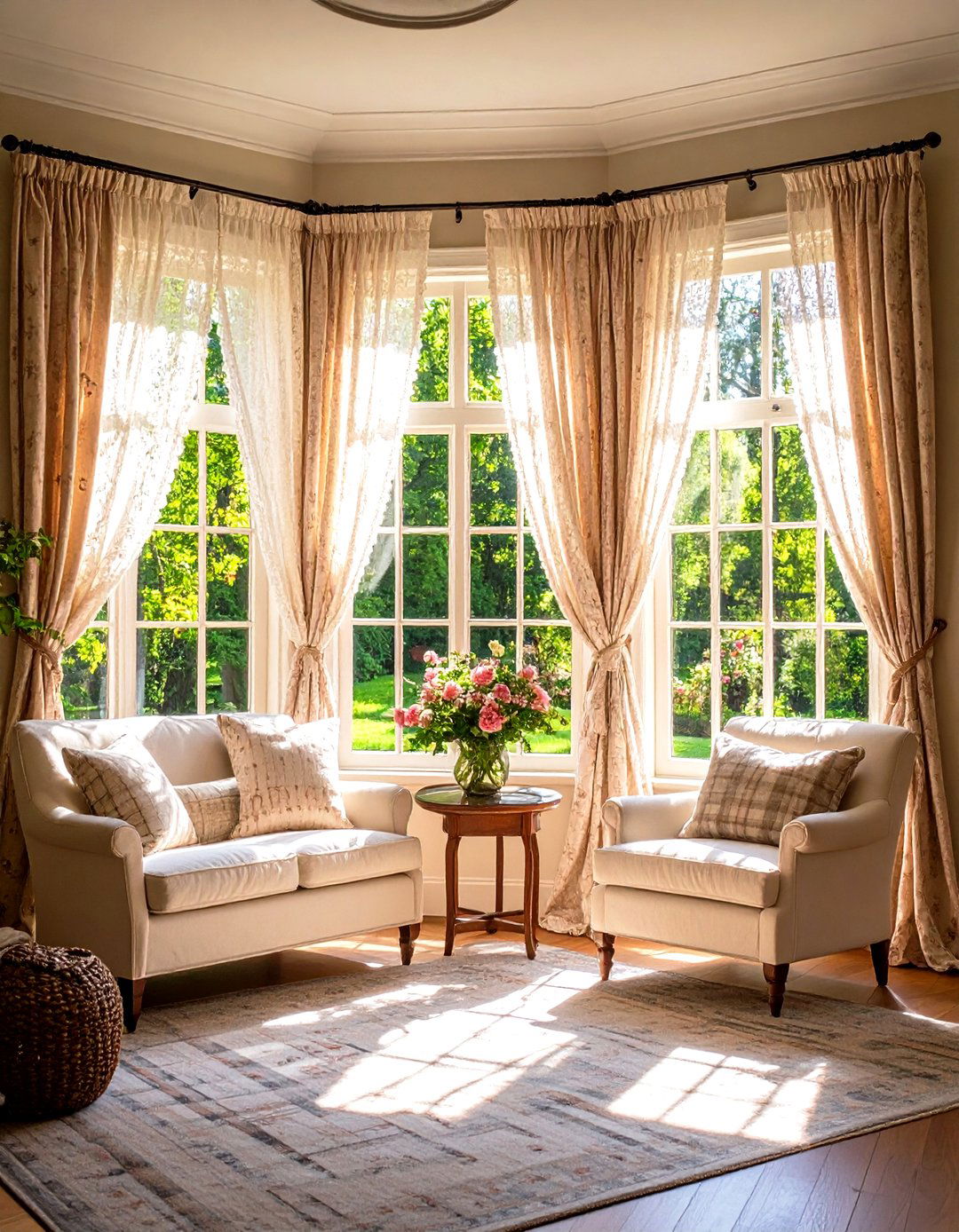
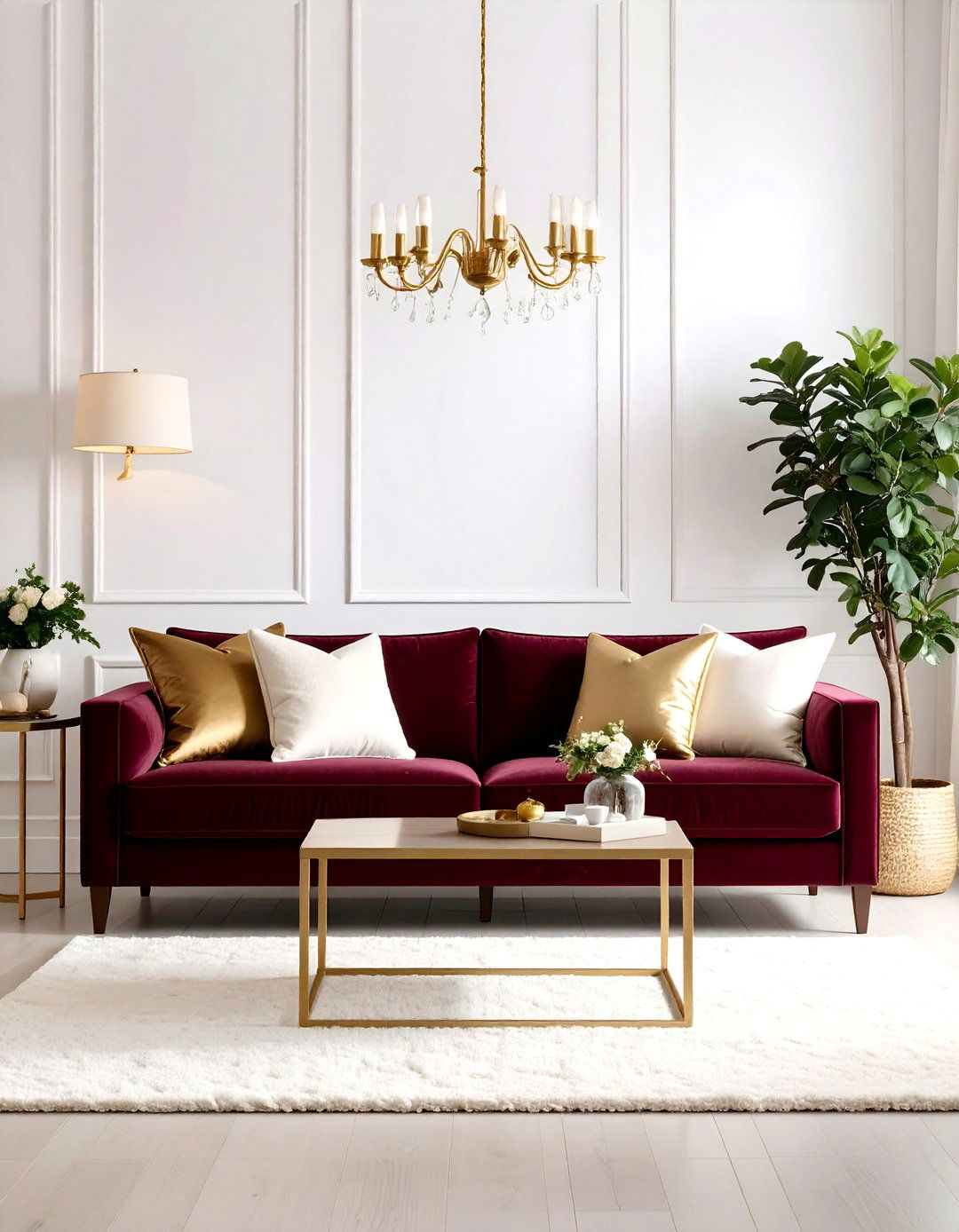
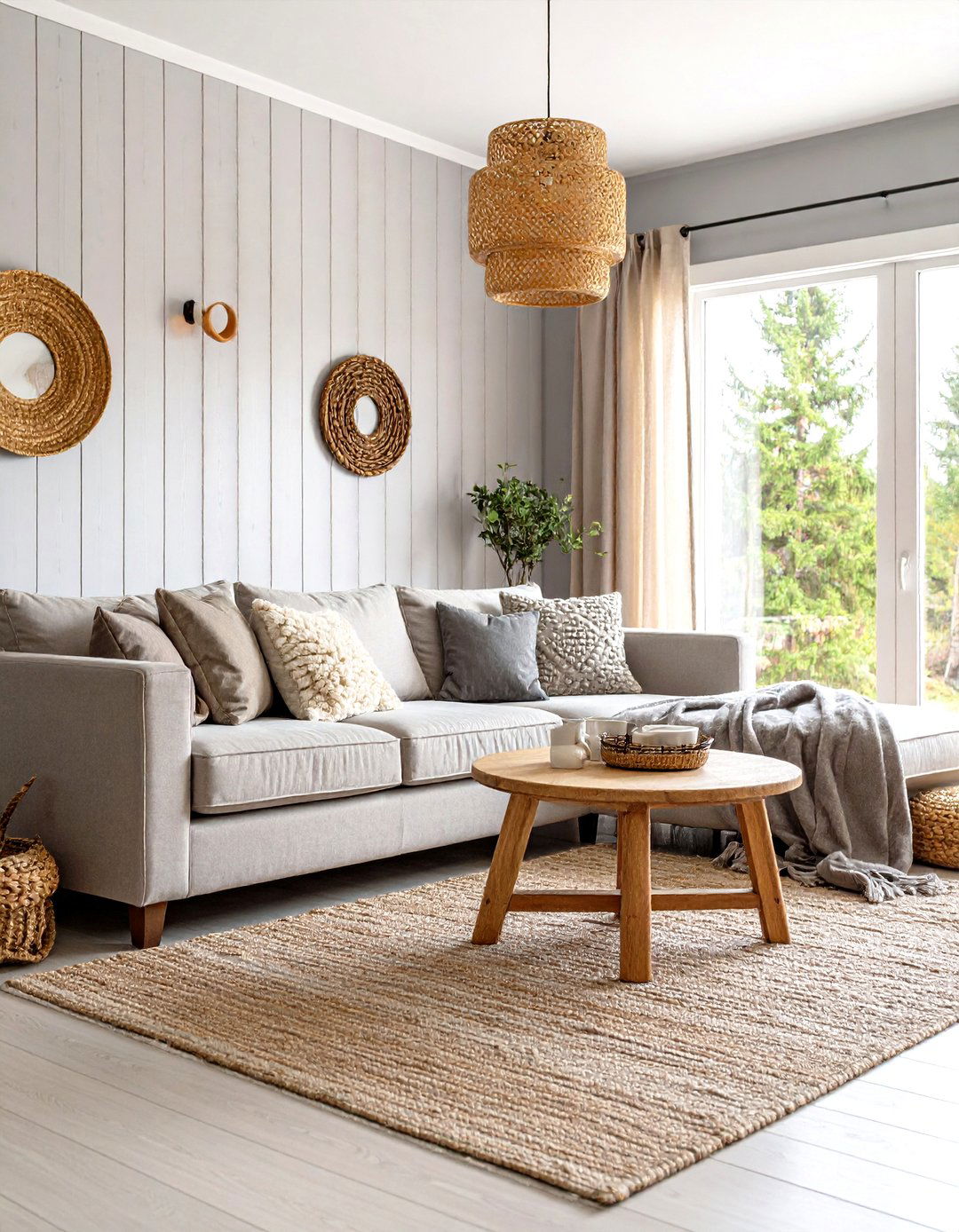
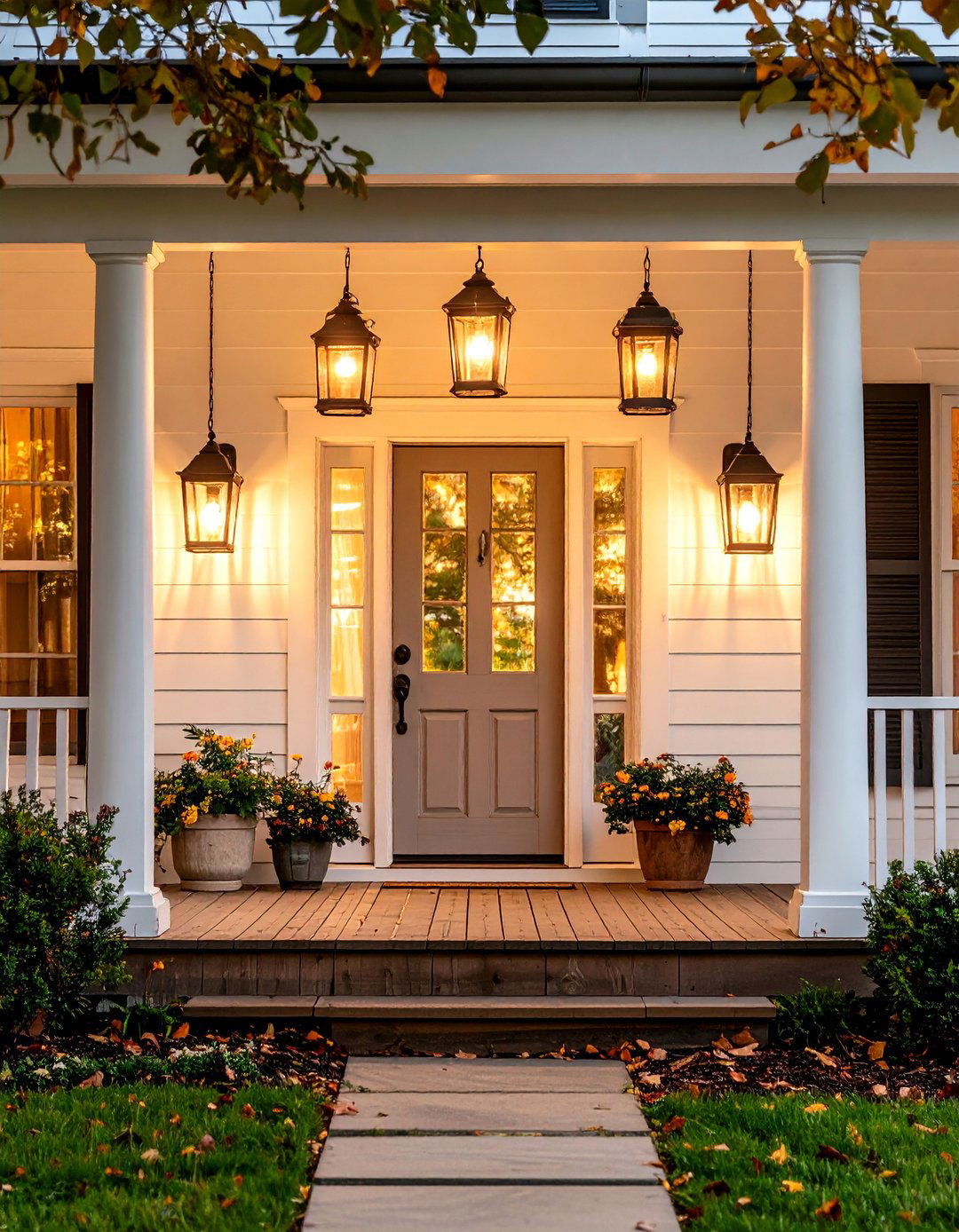
Leave a Reply